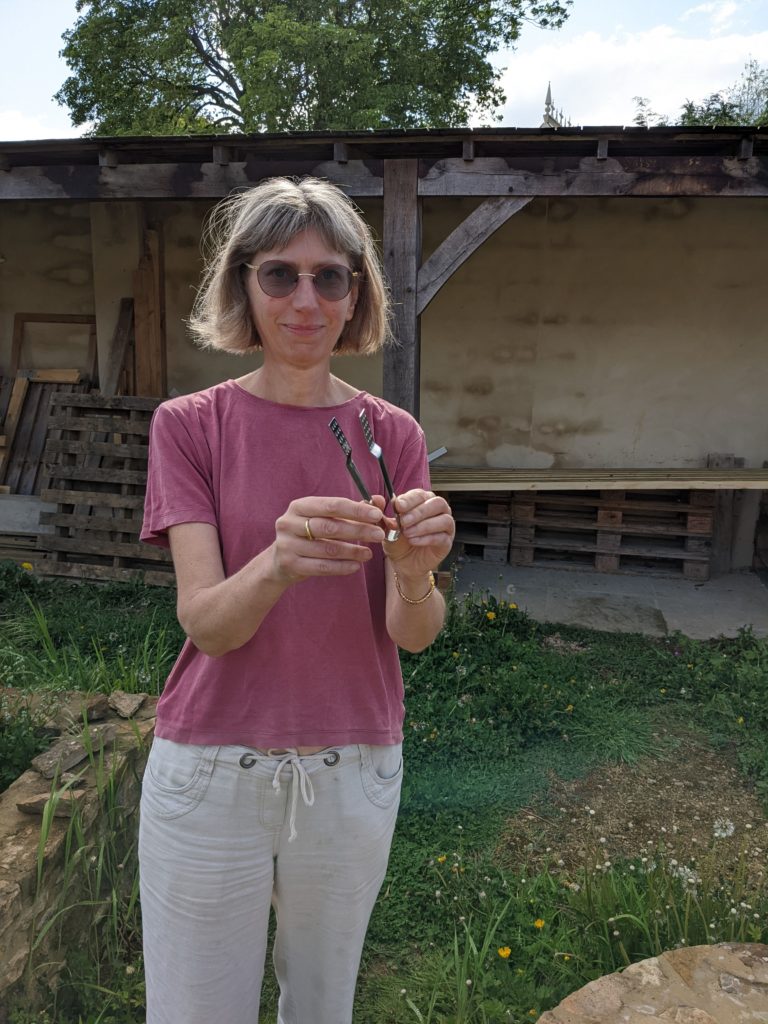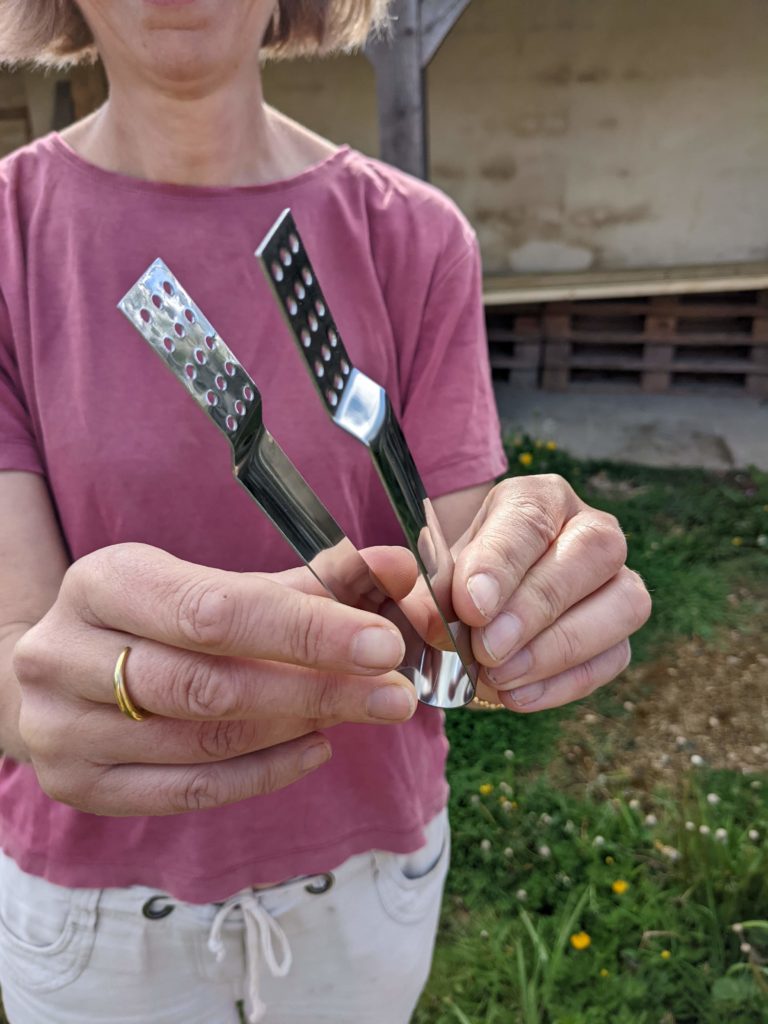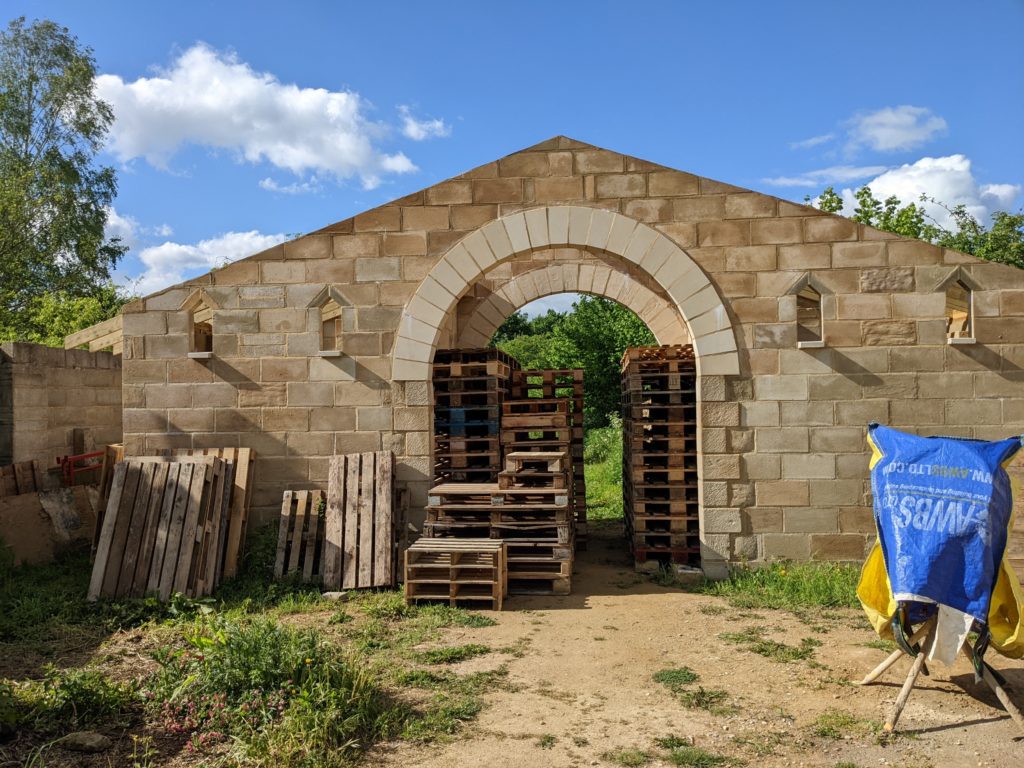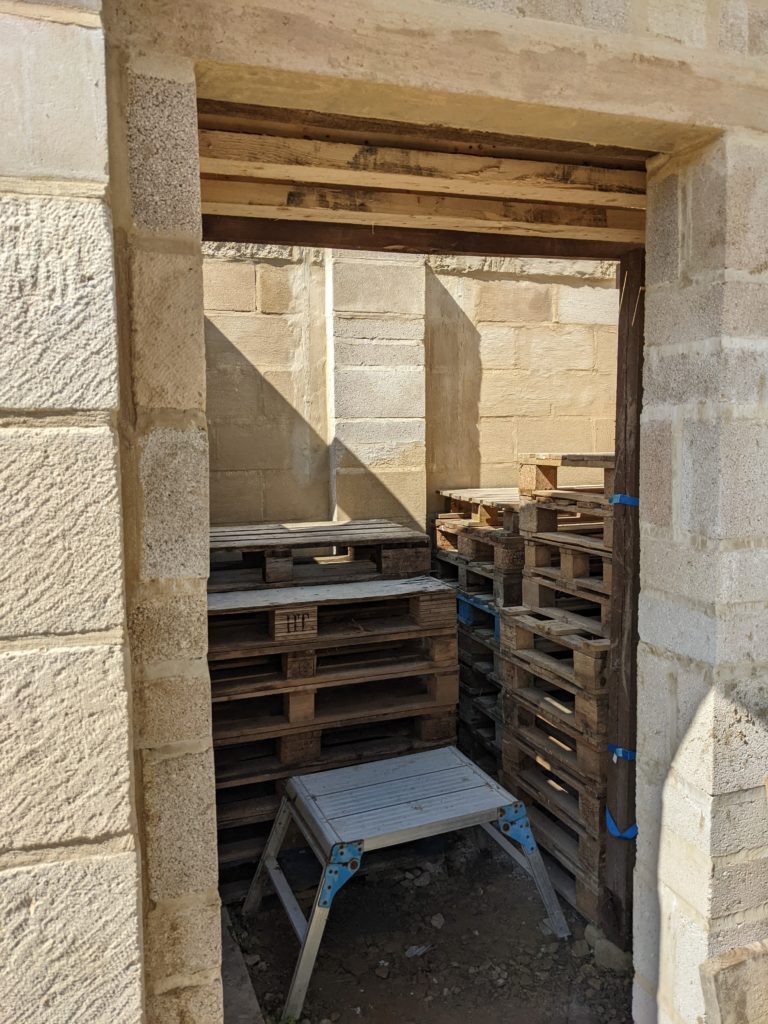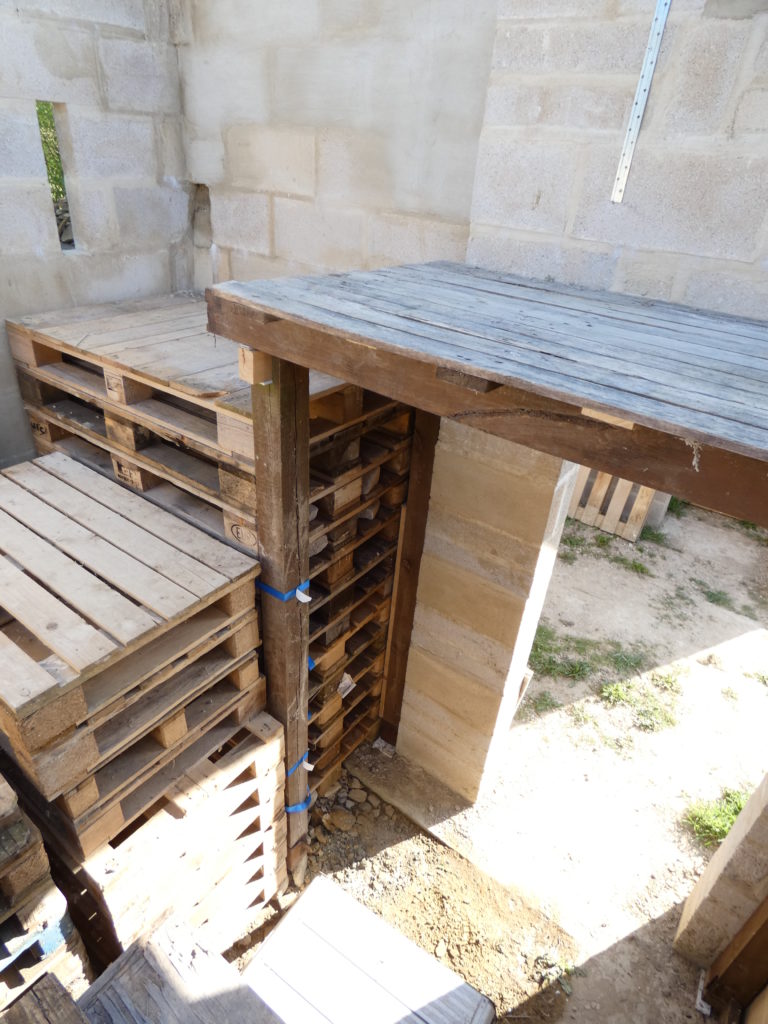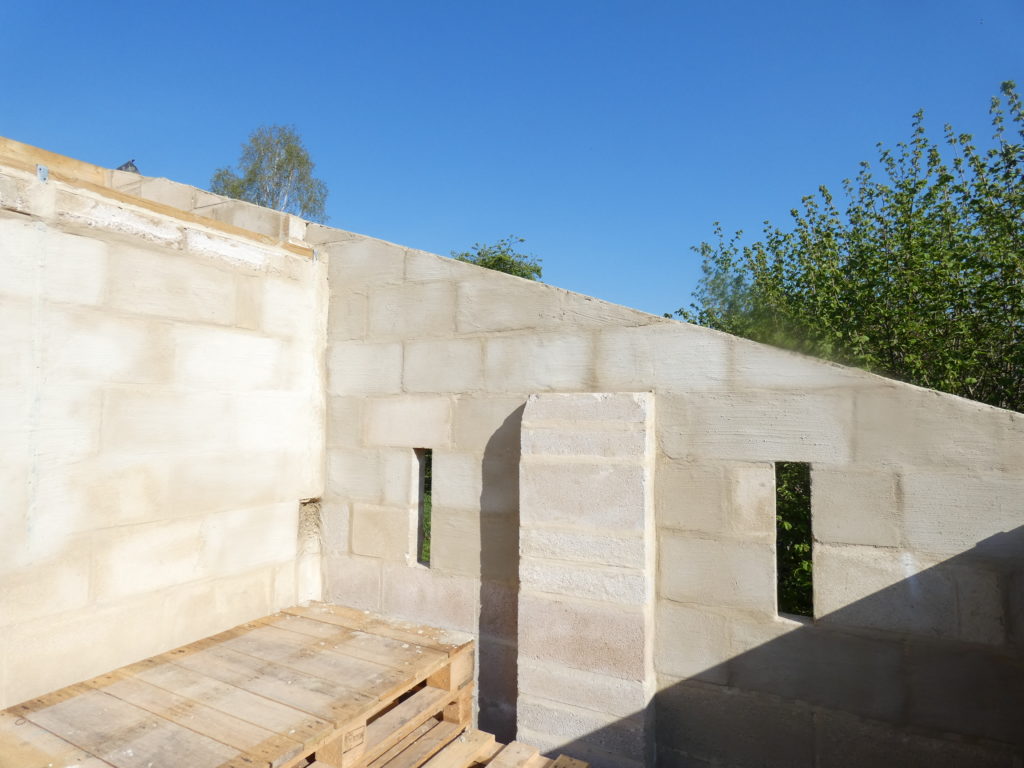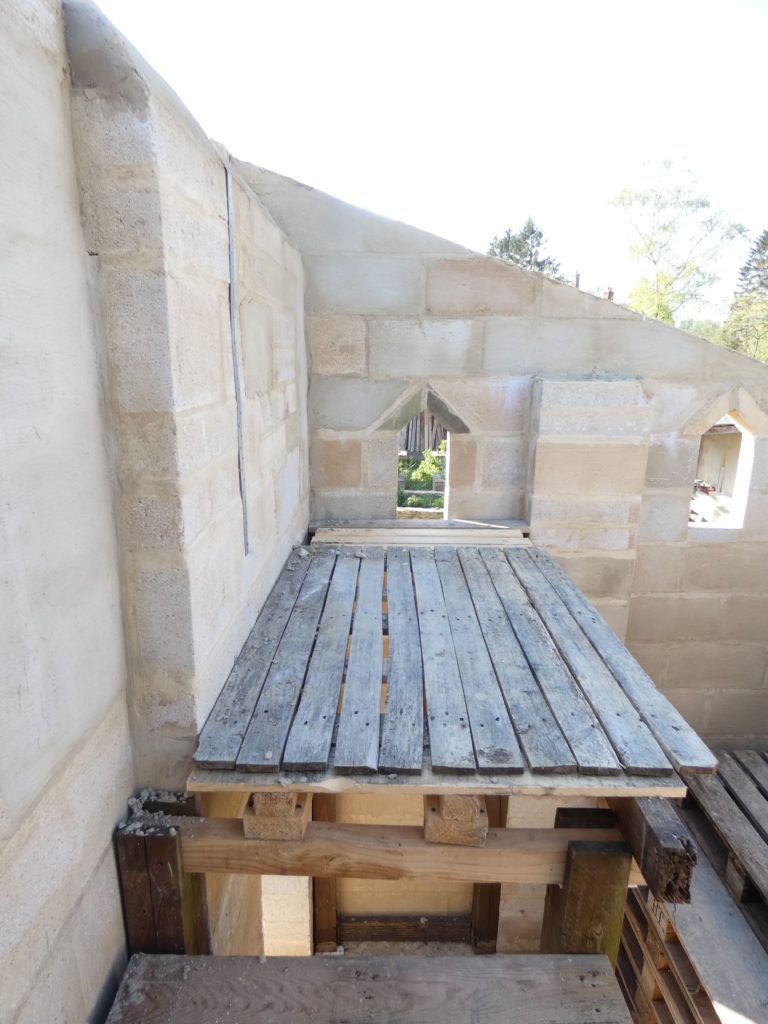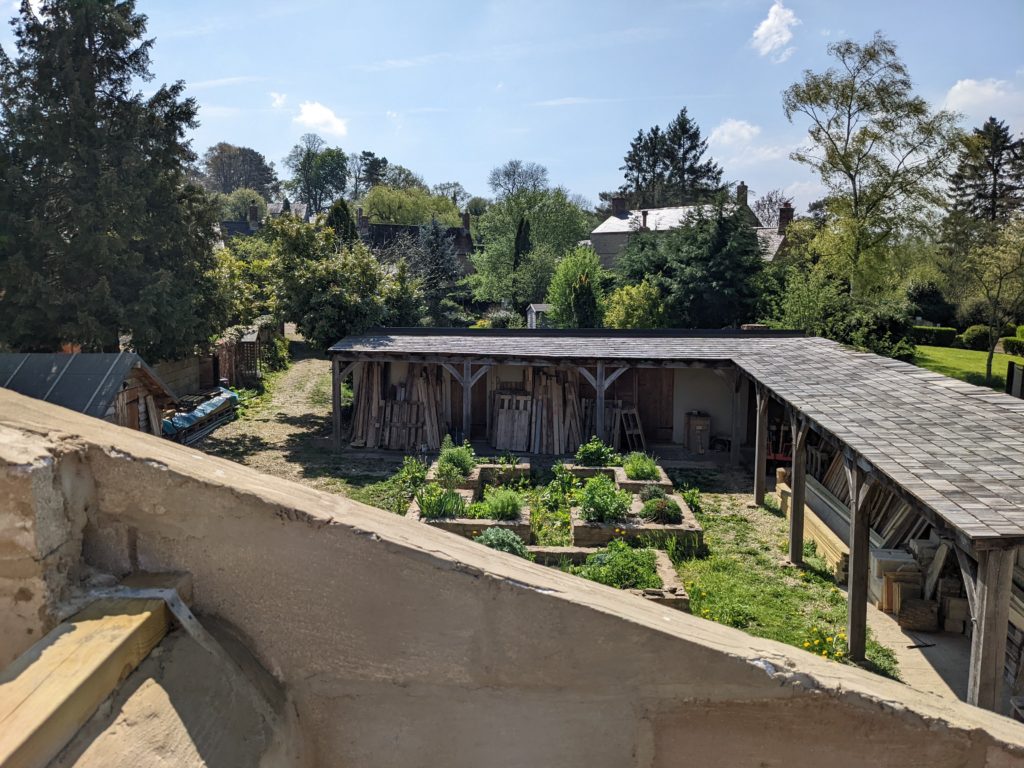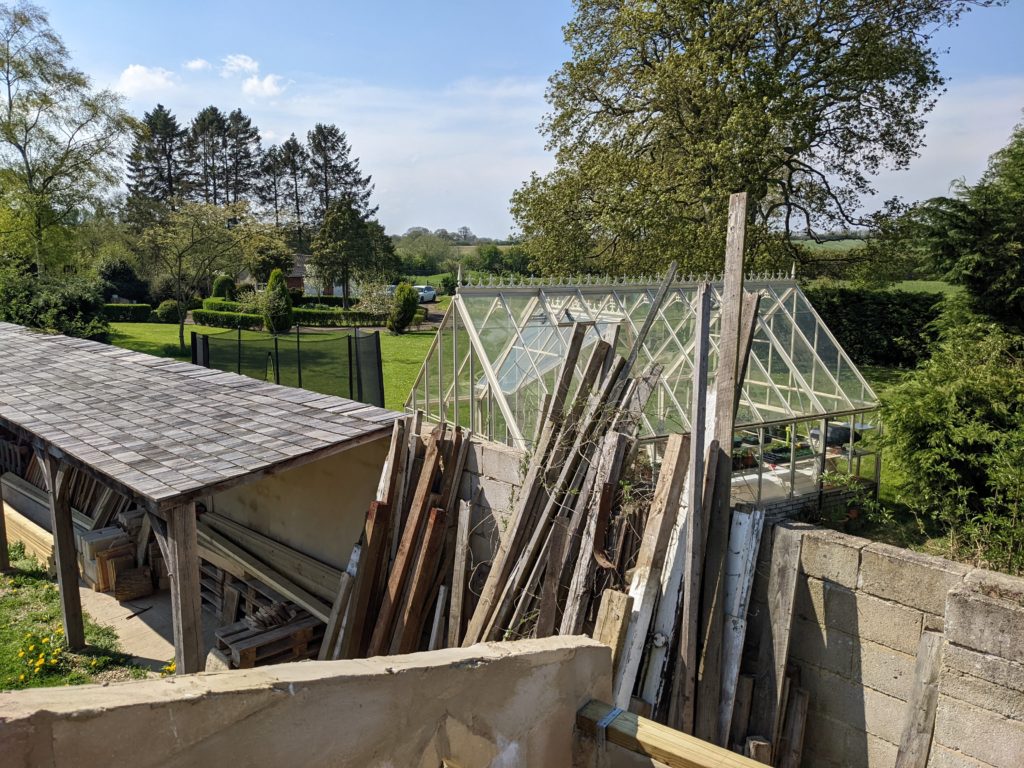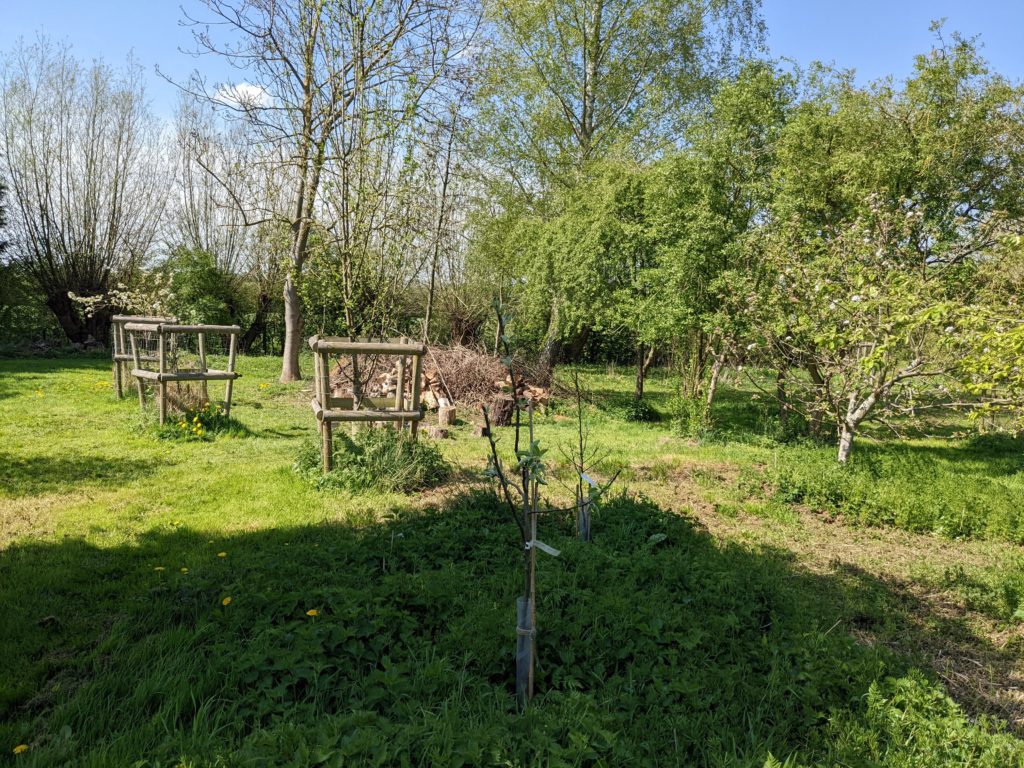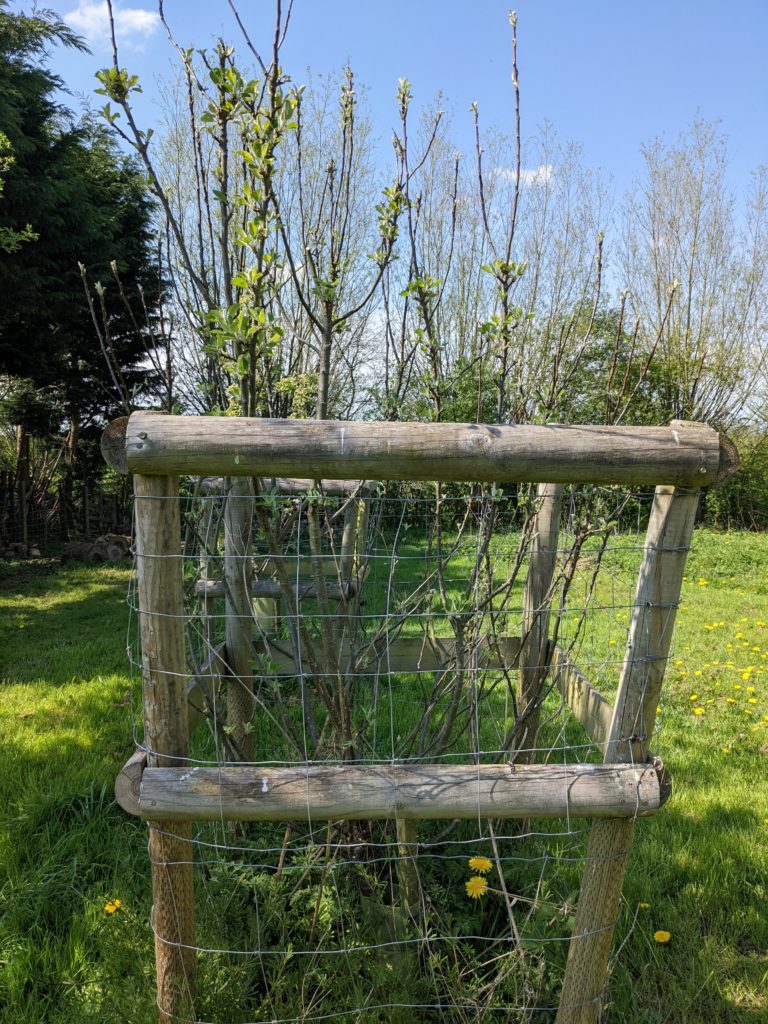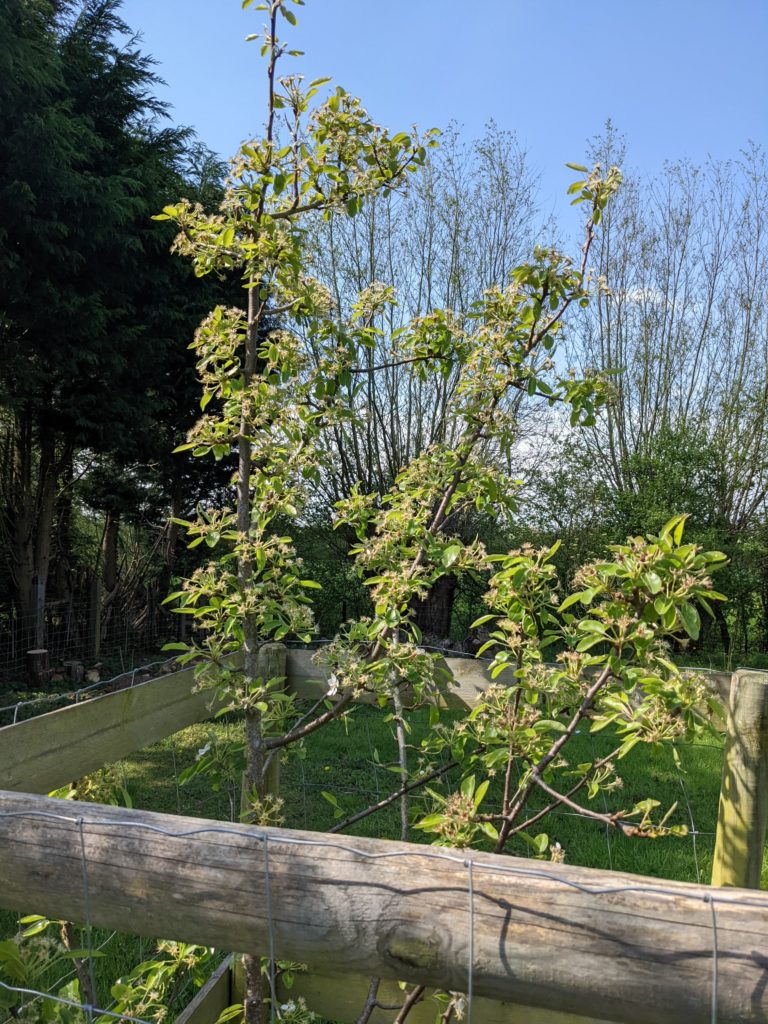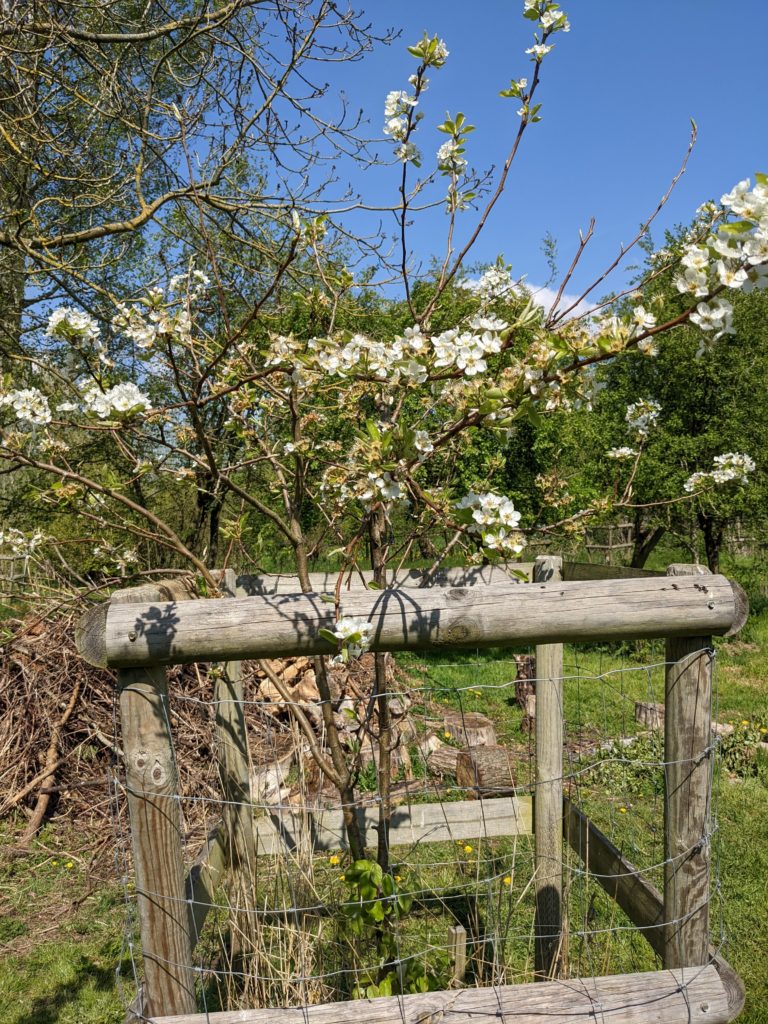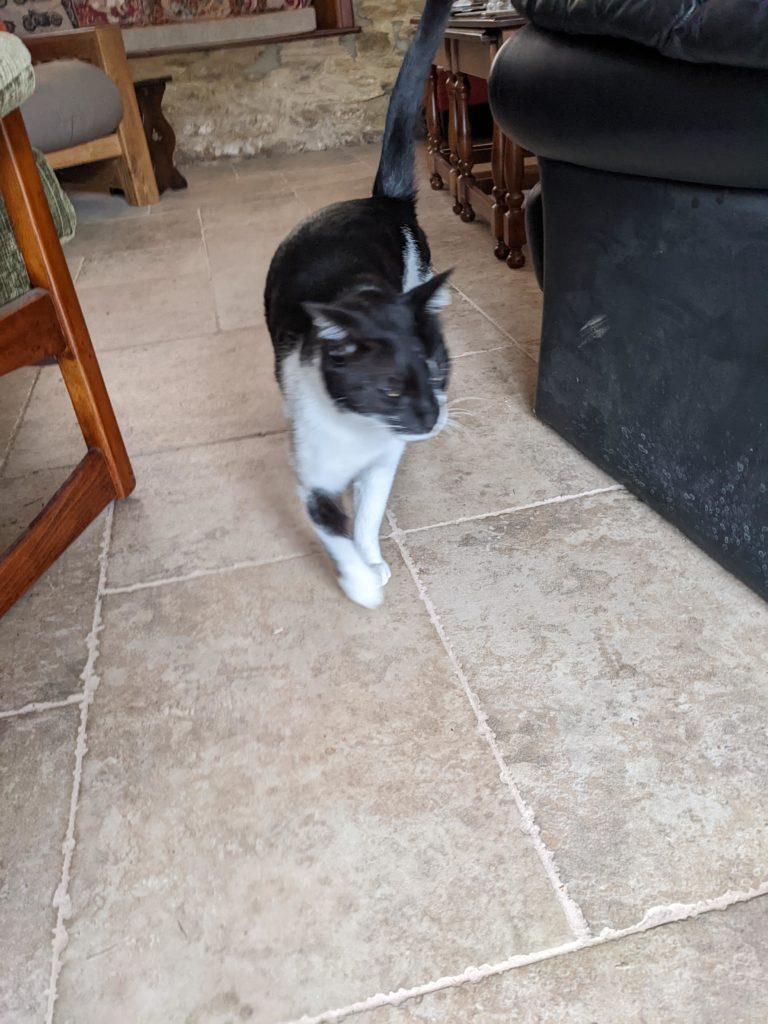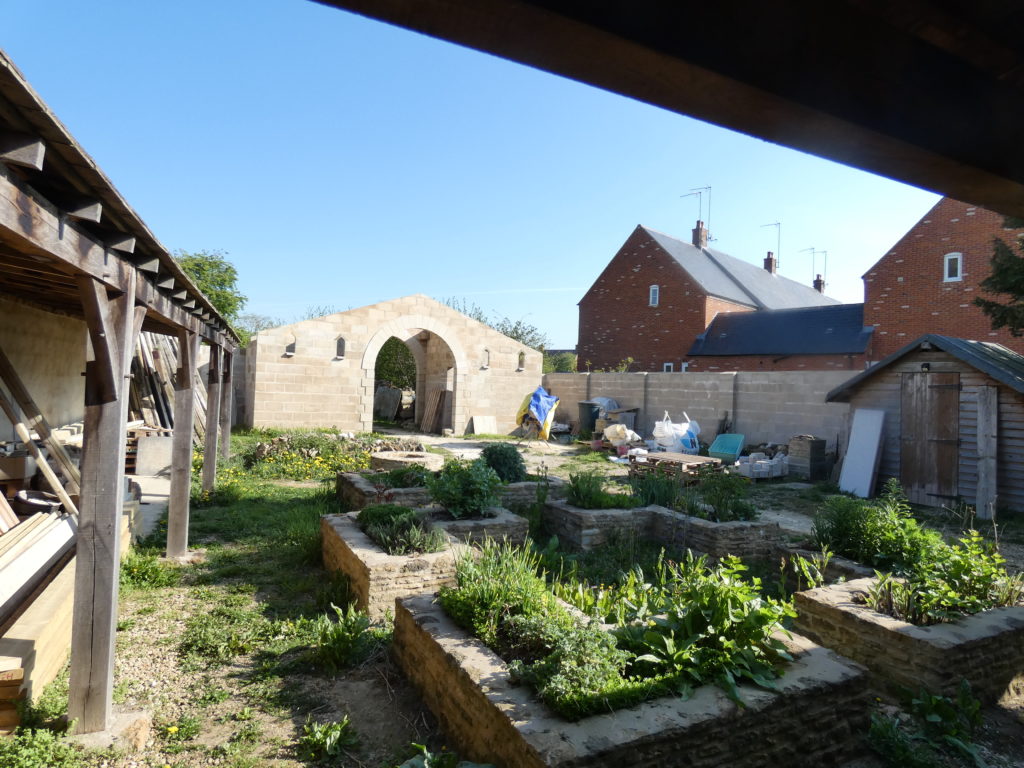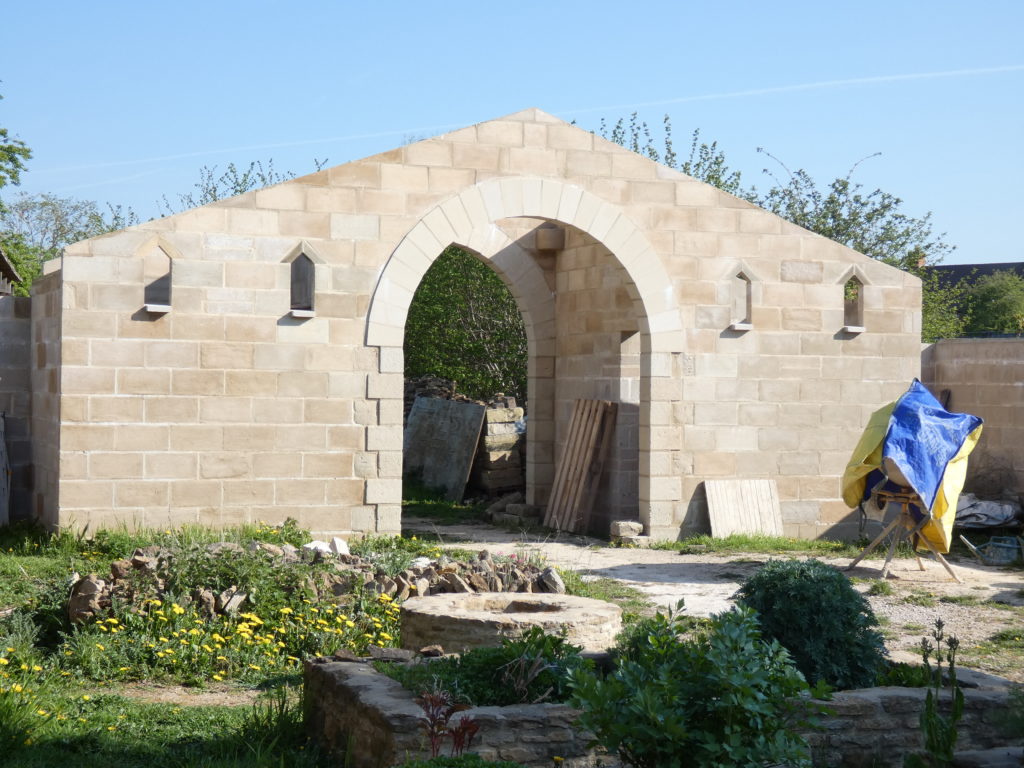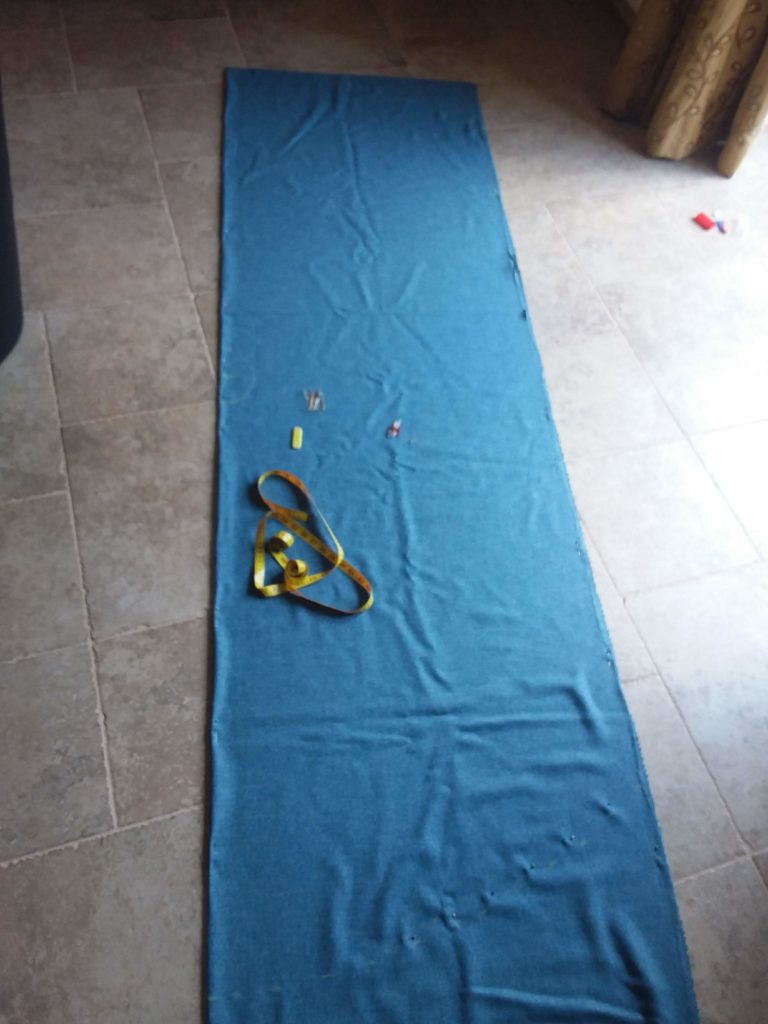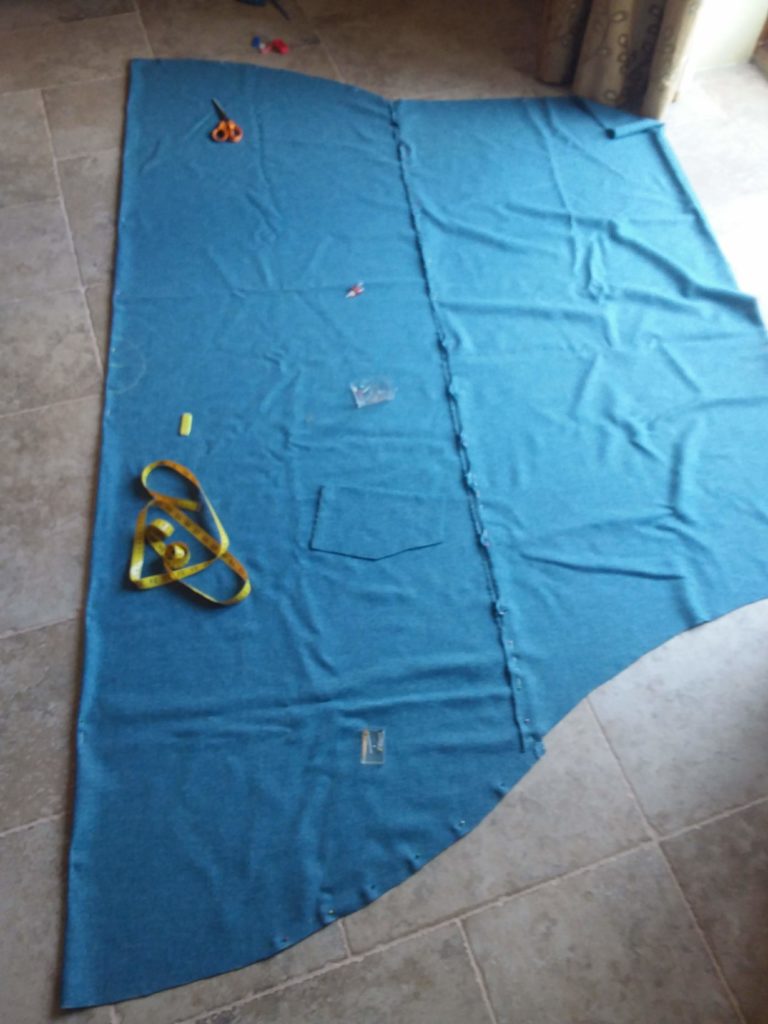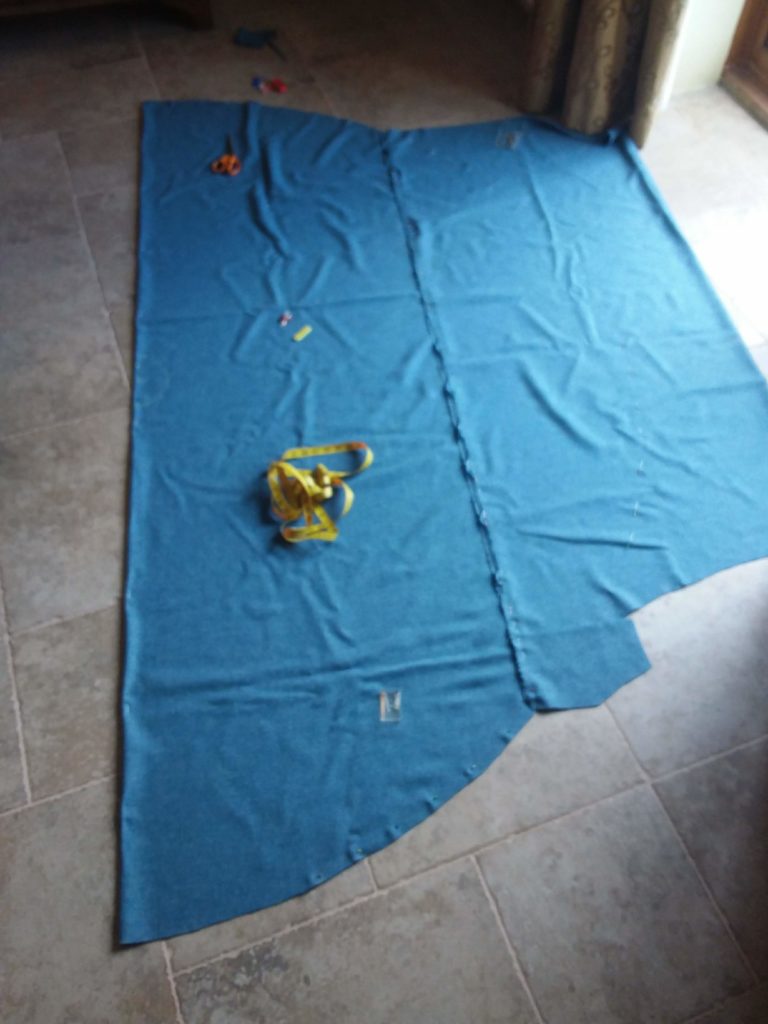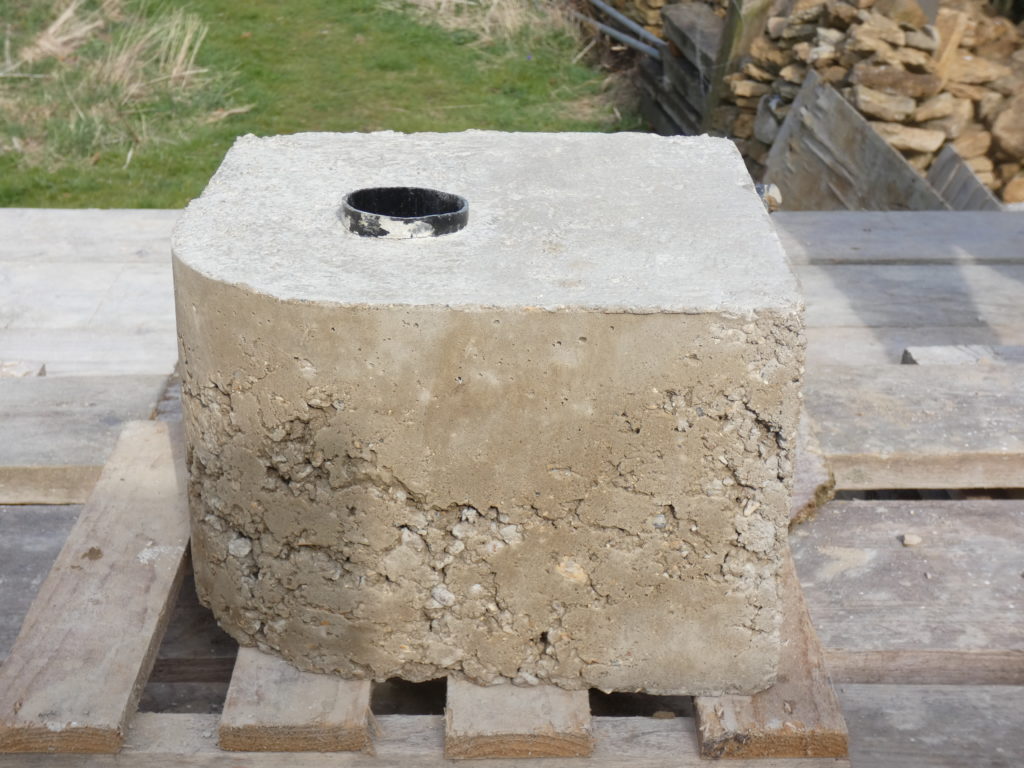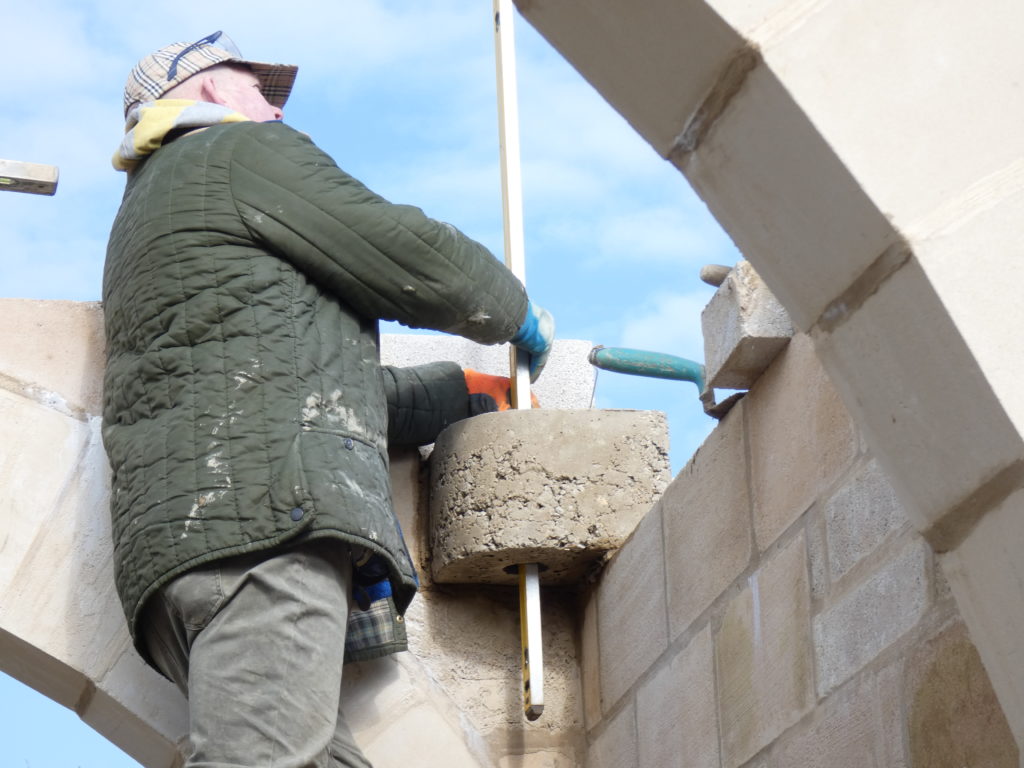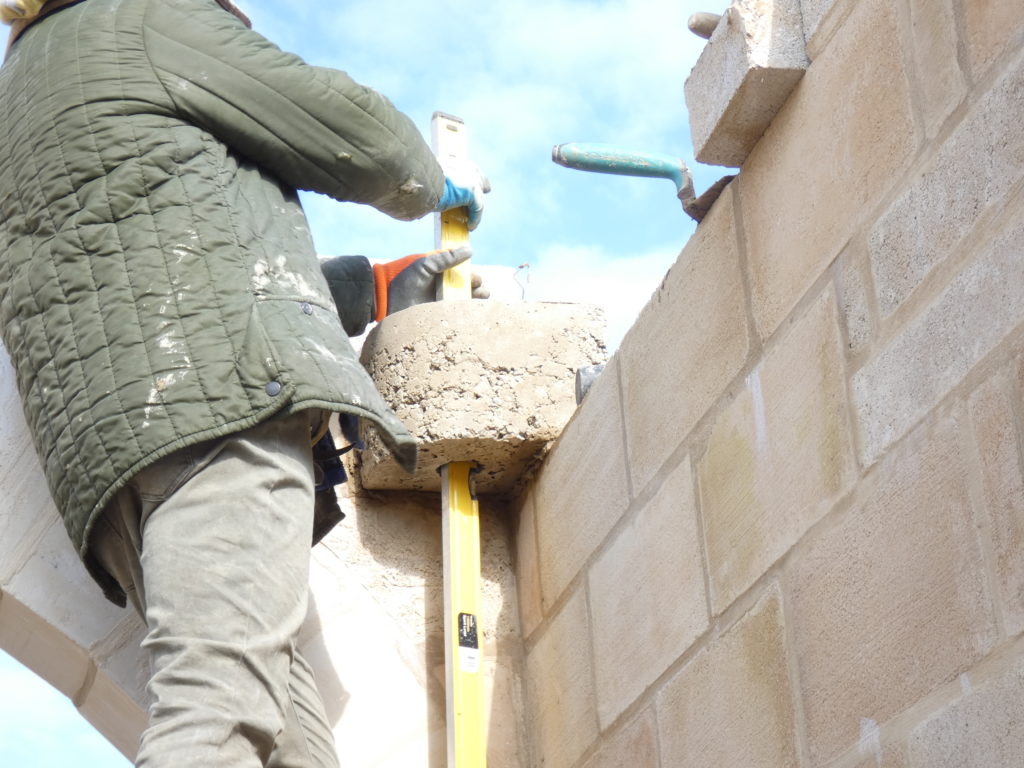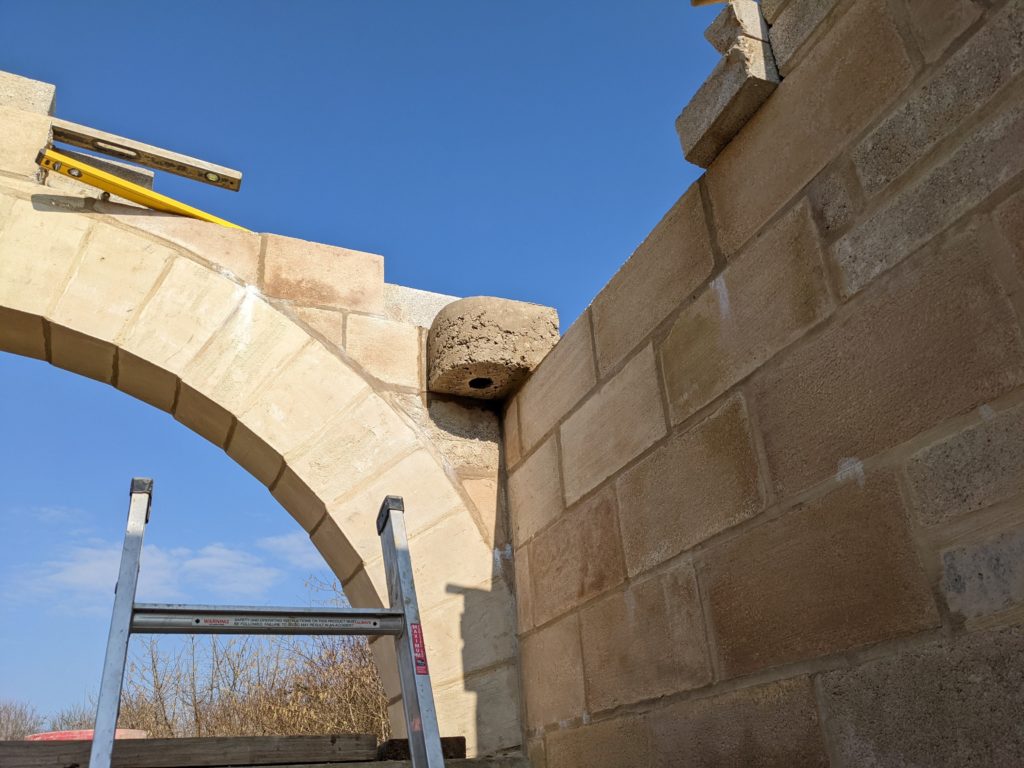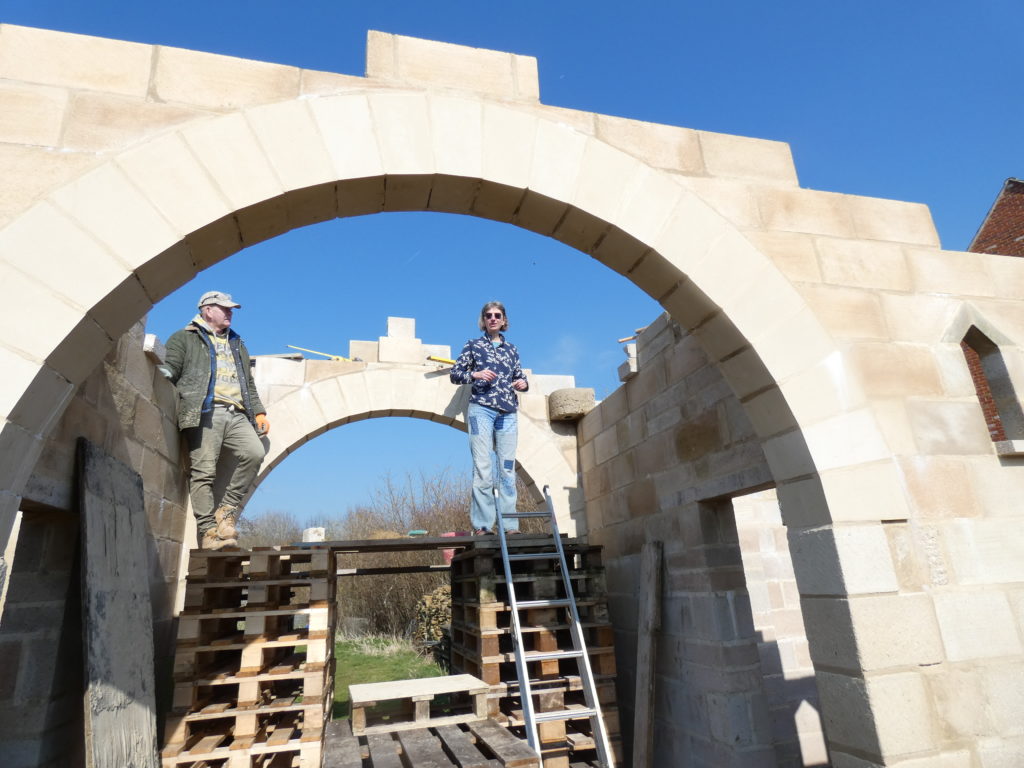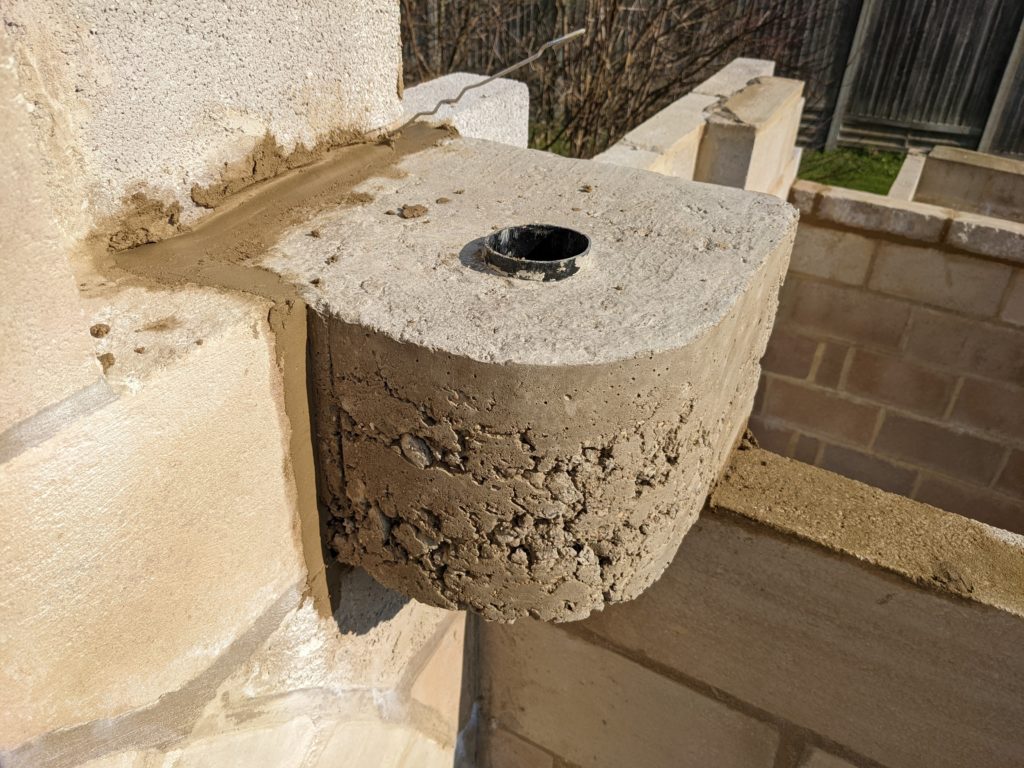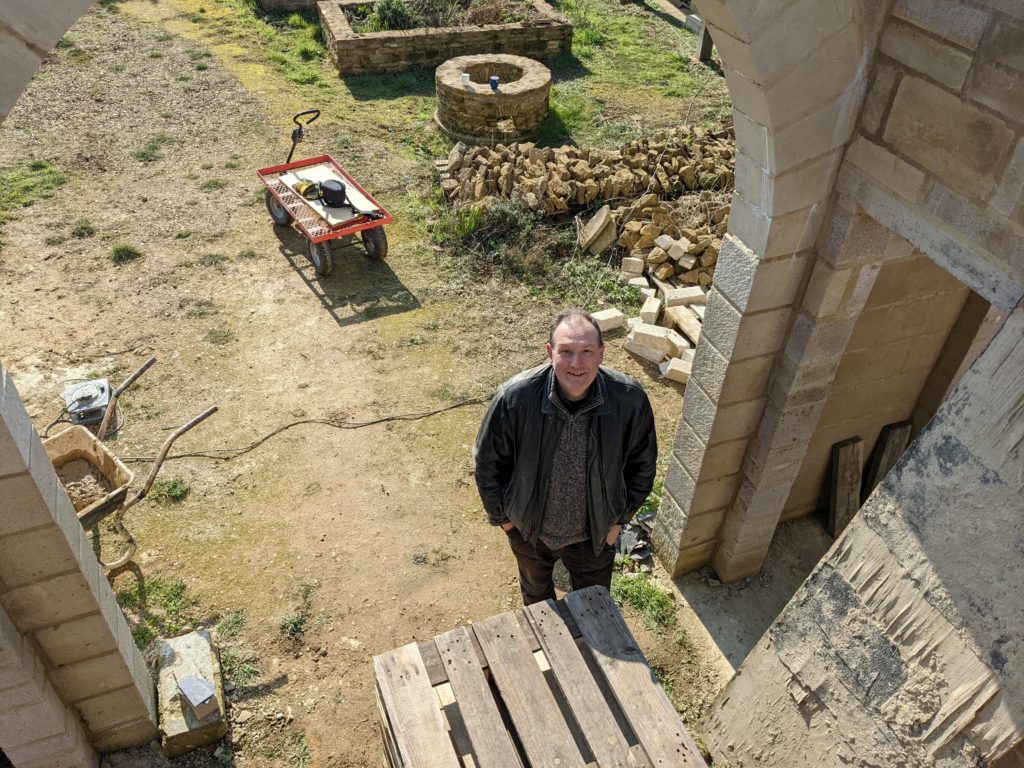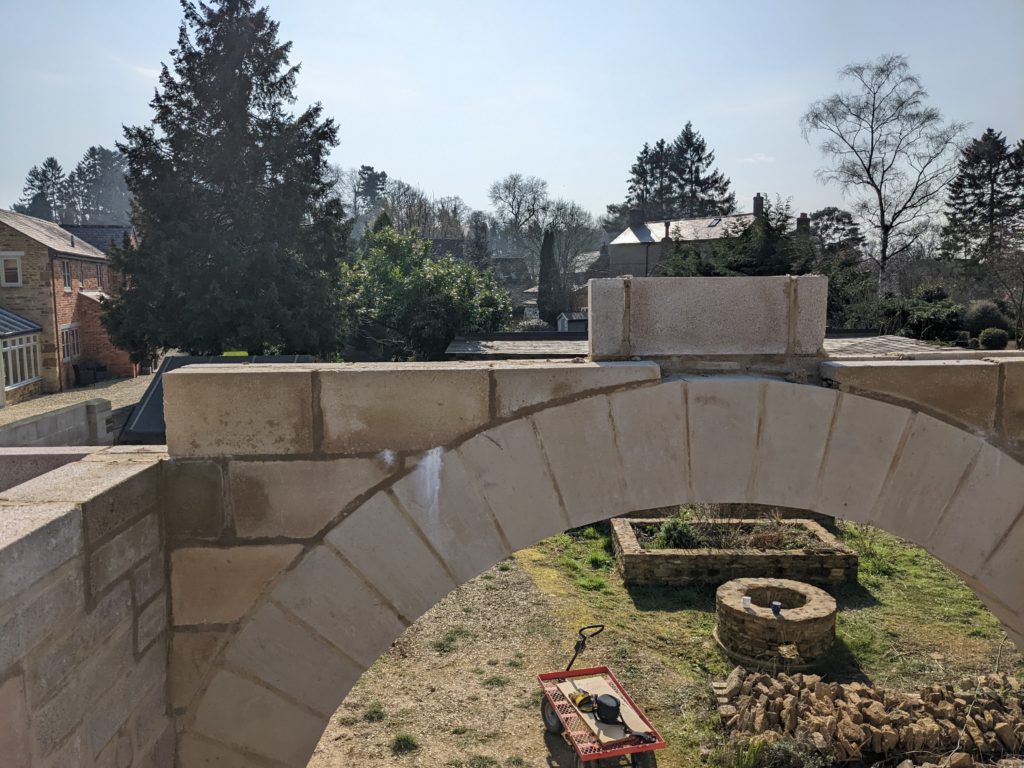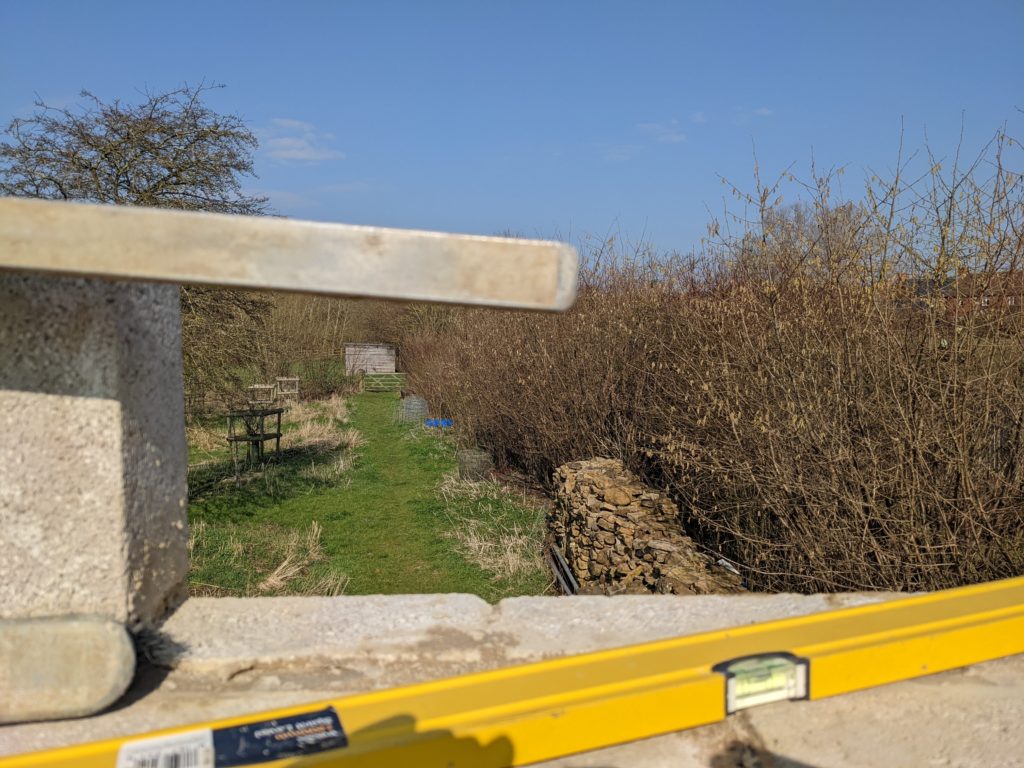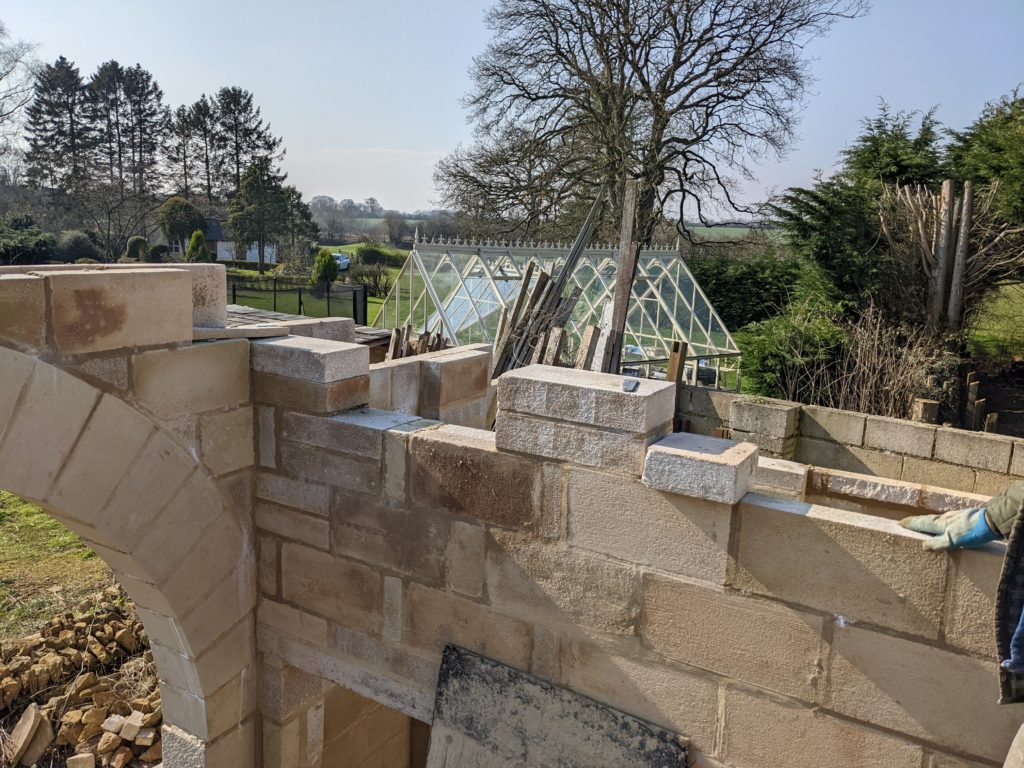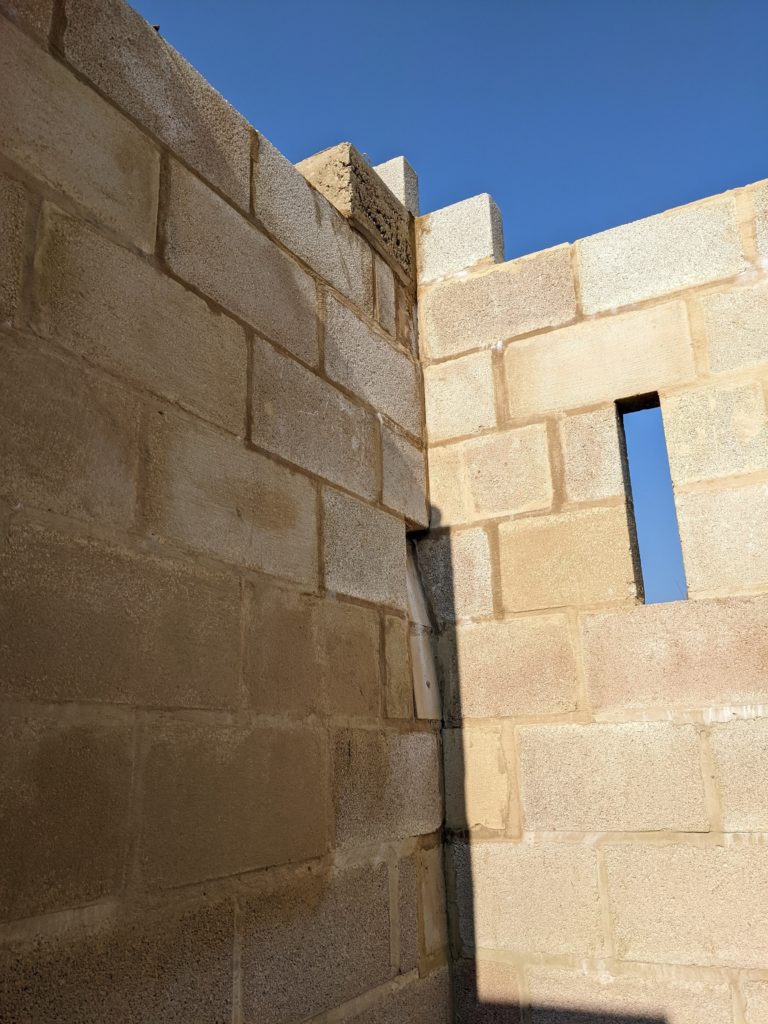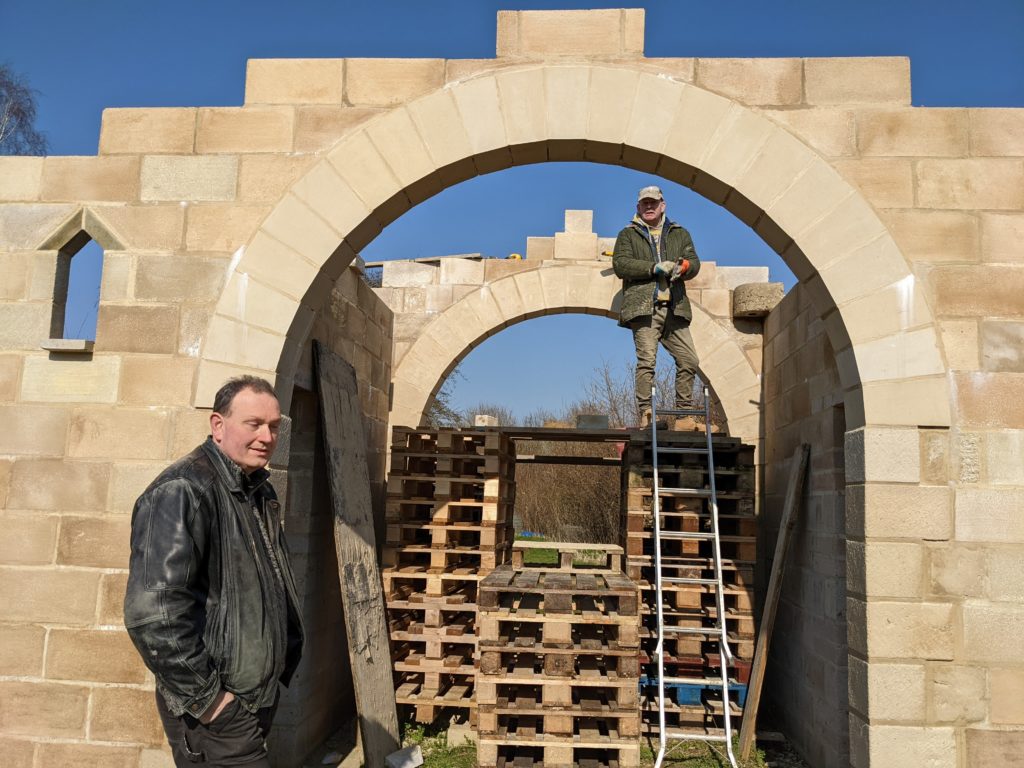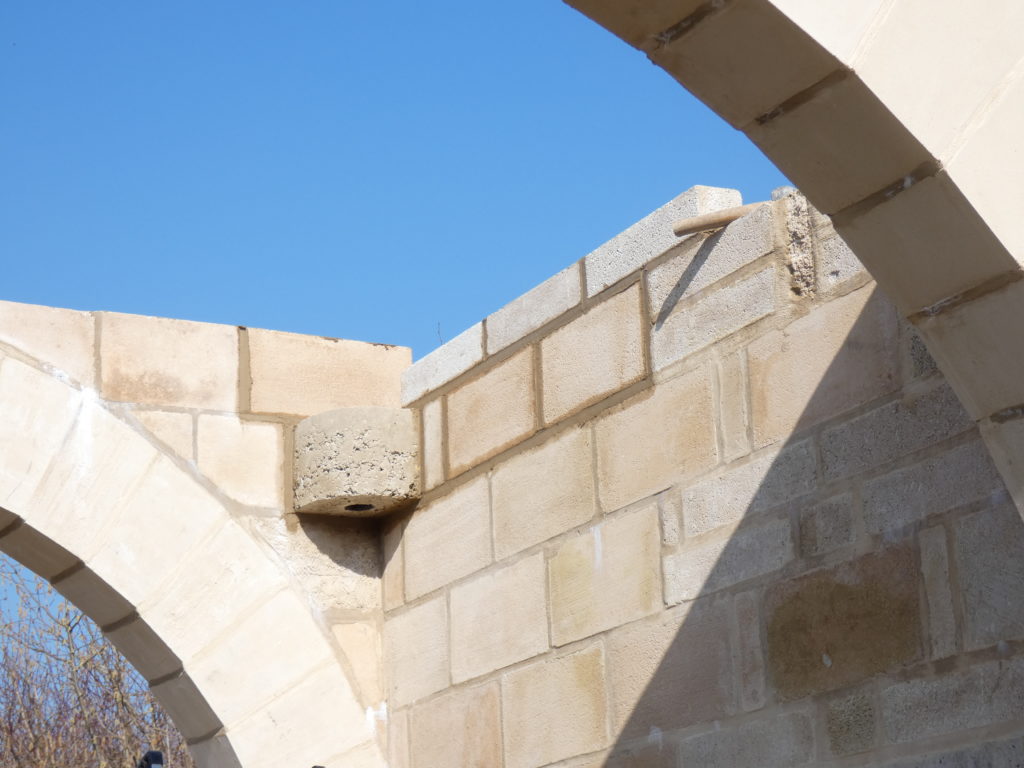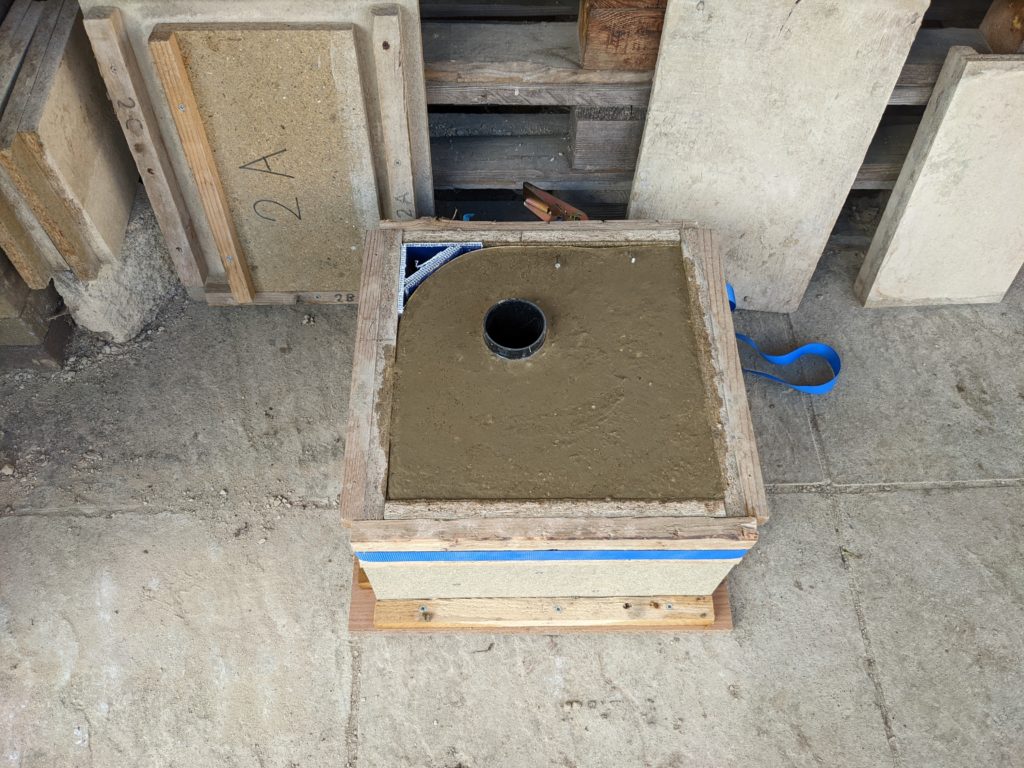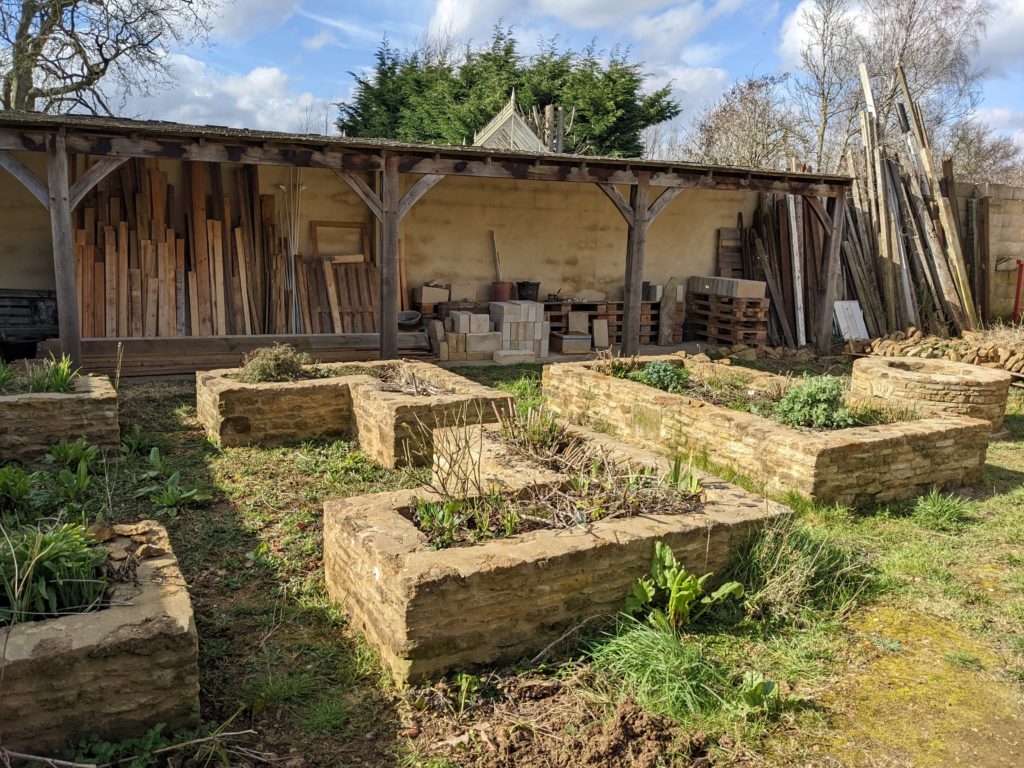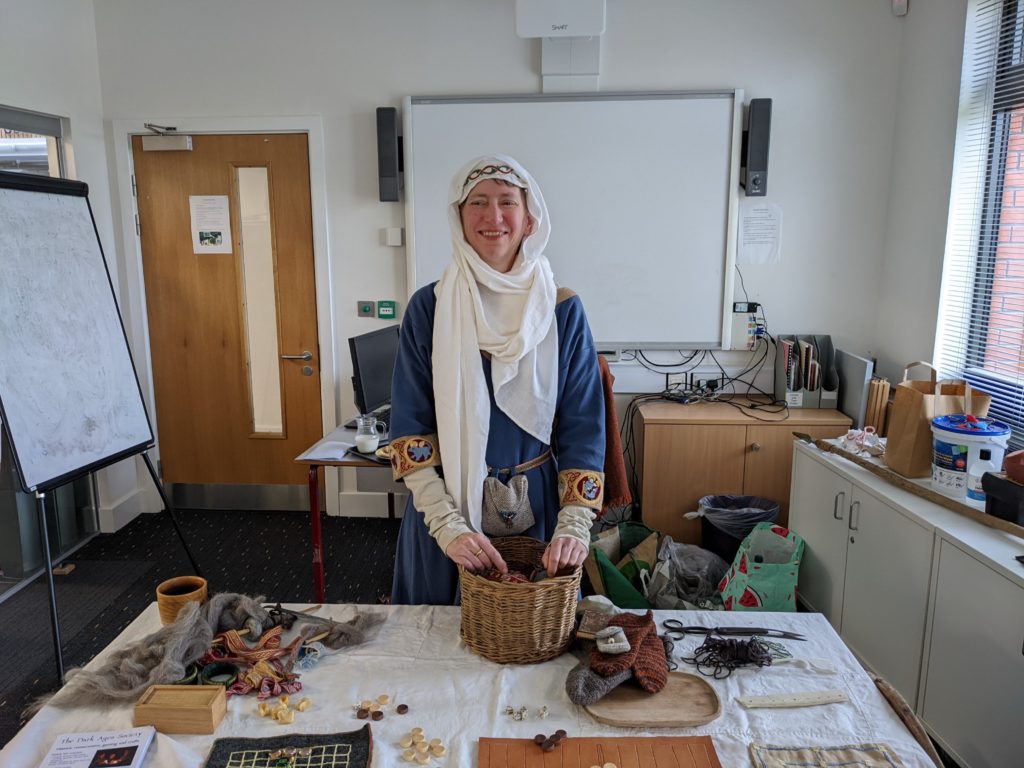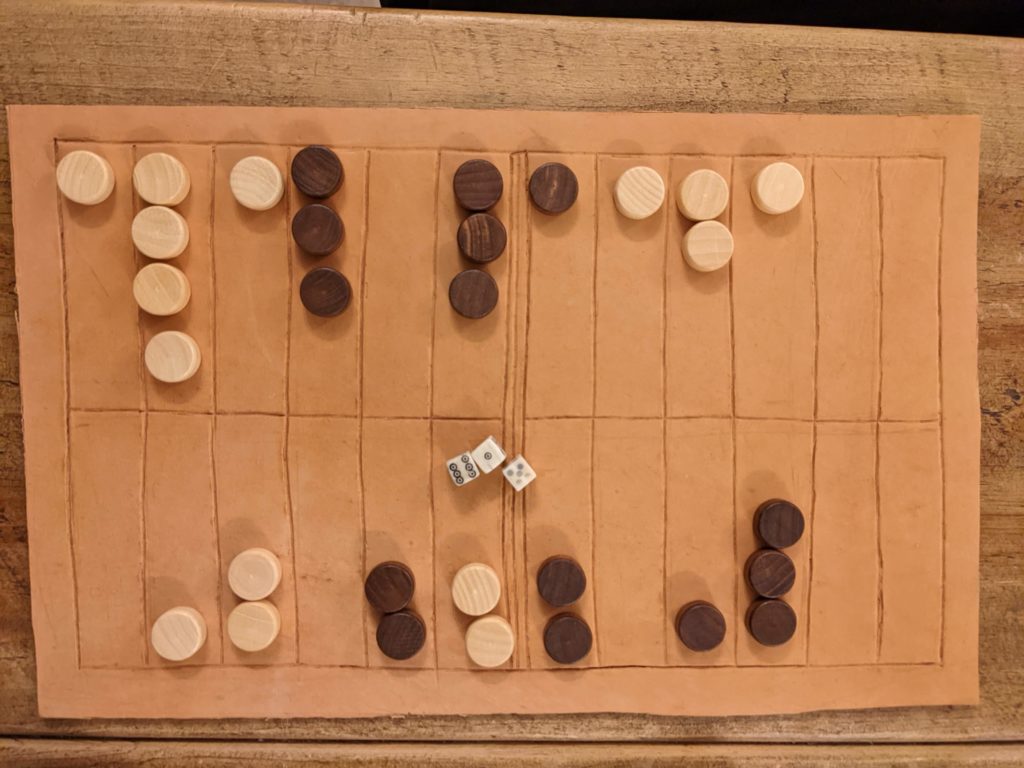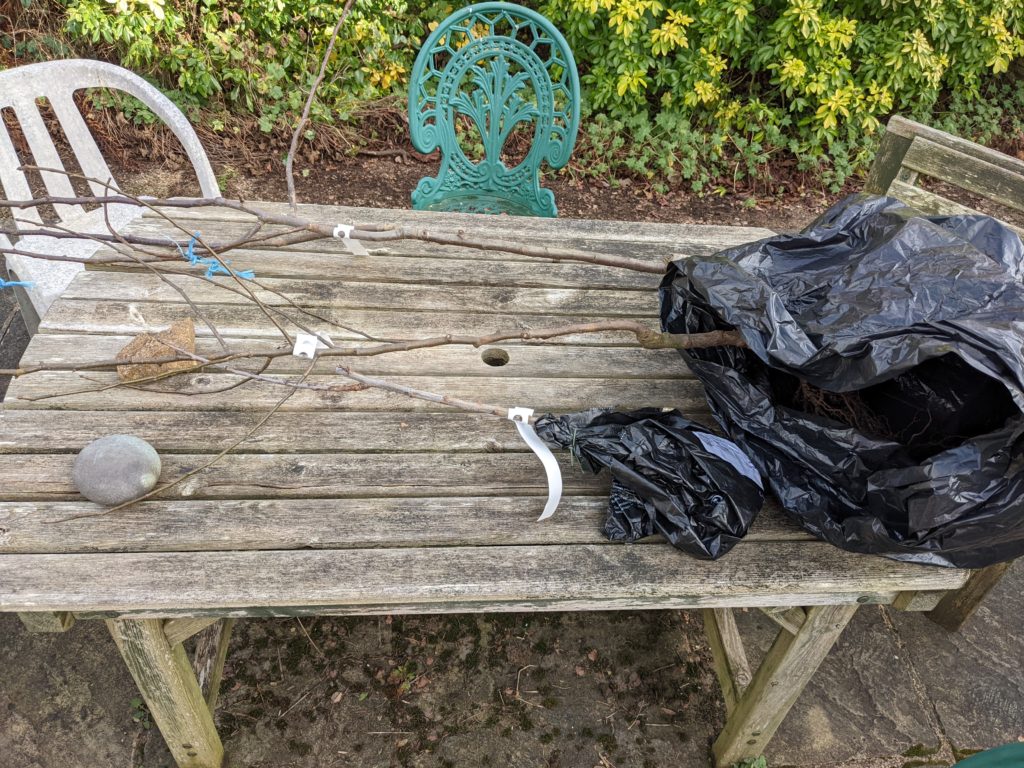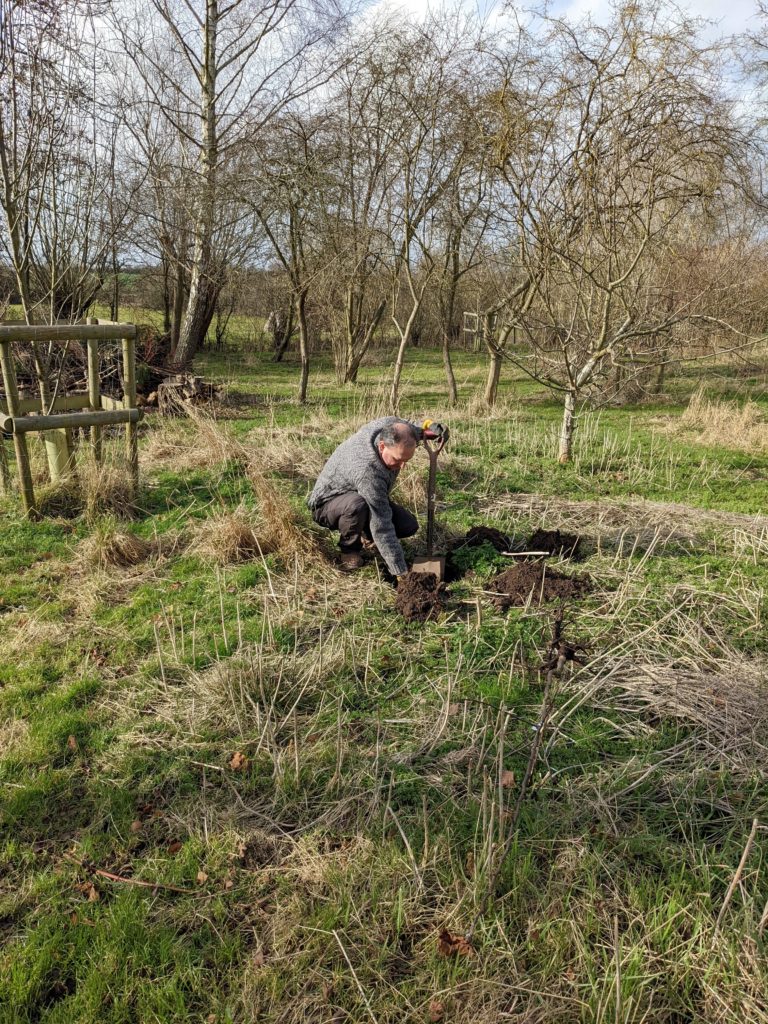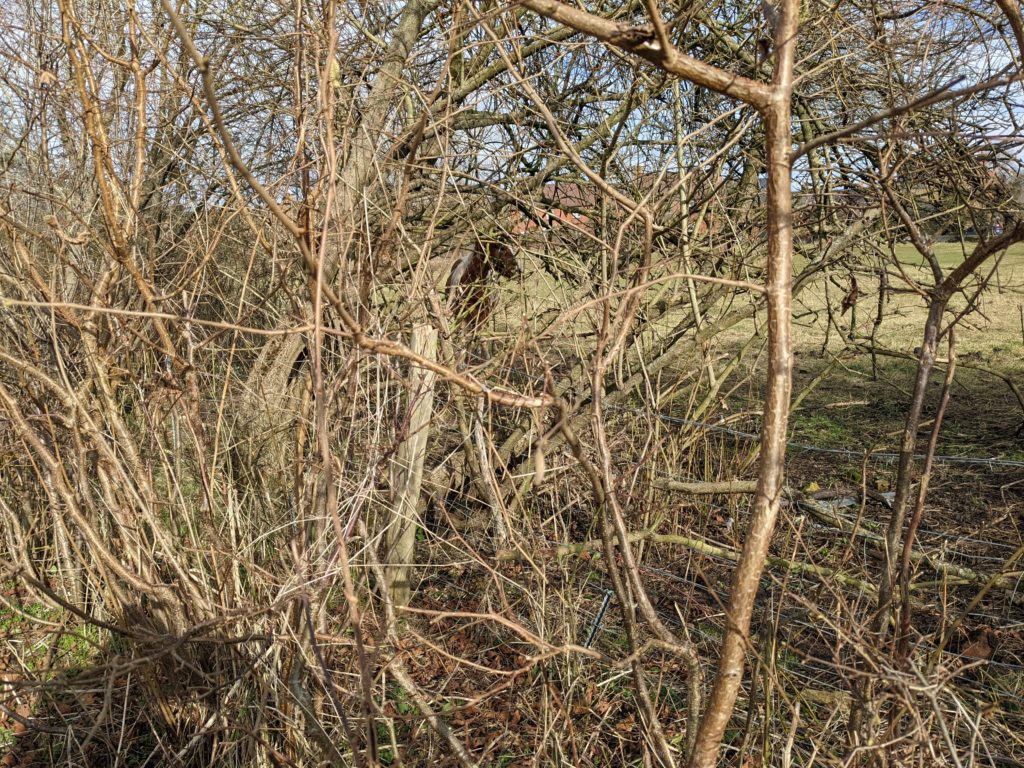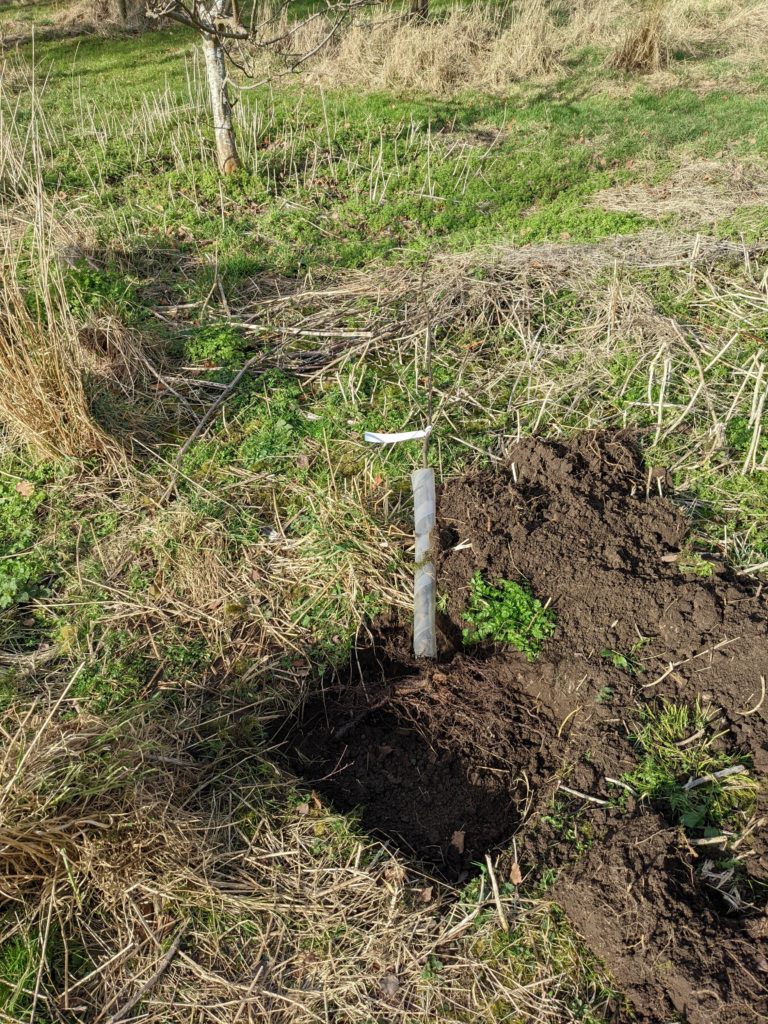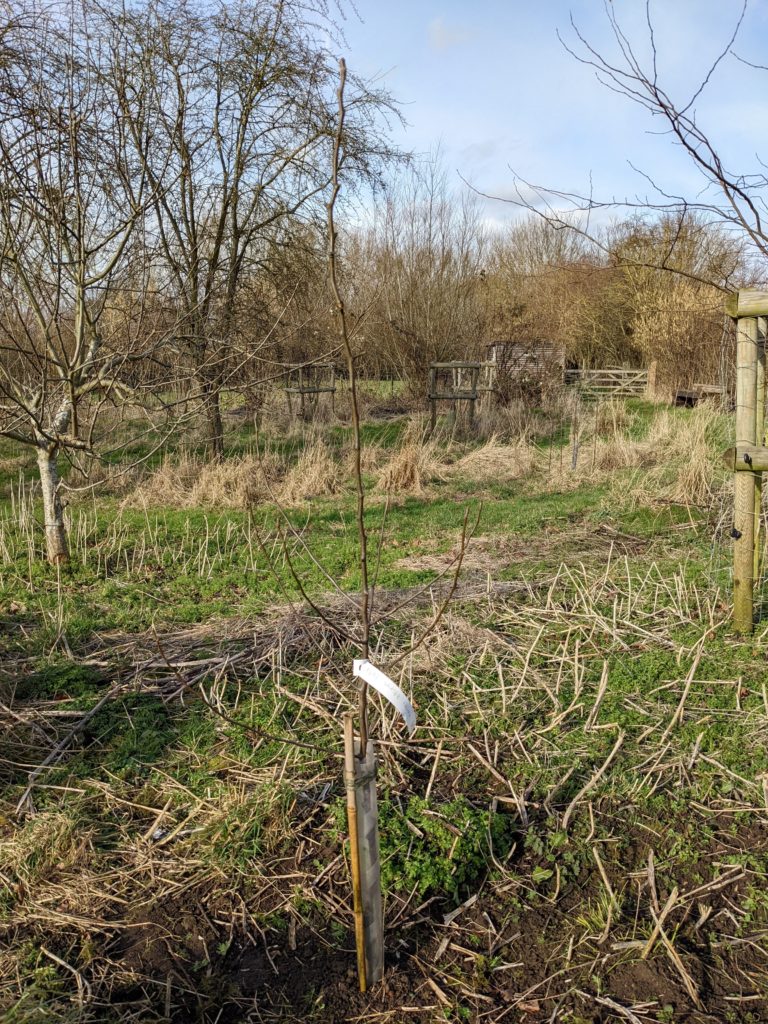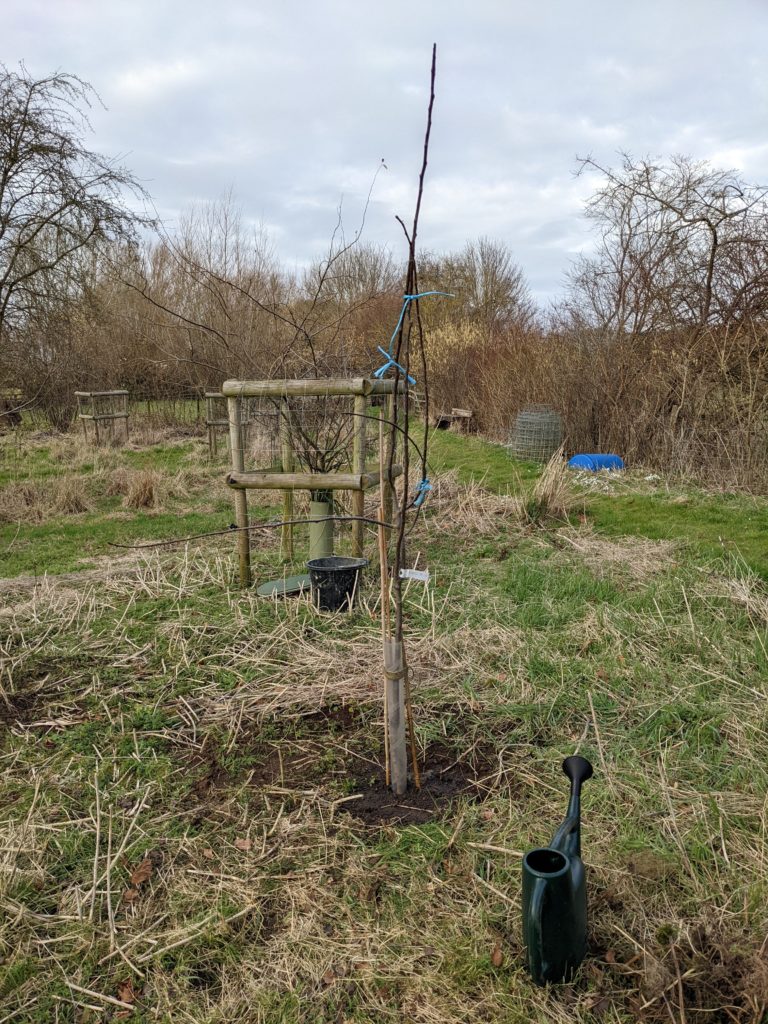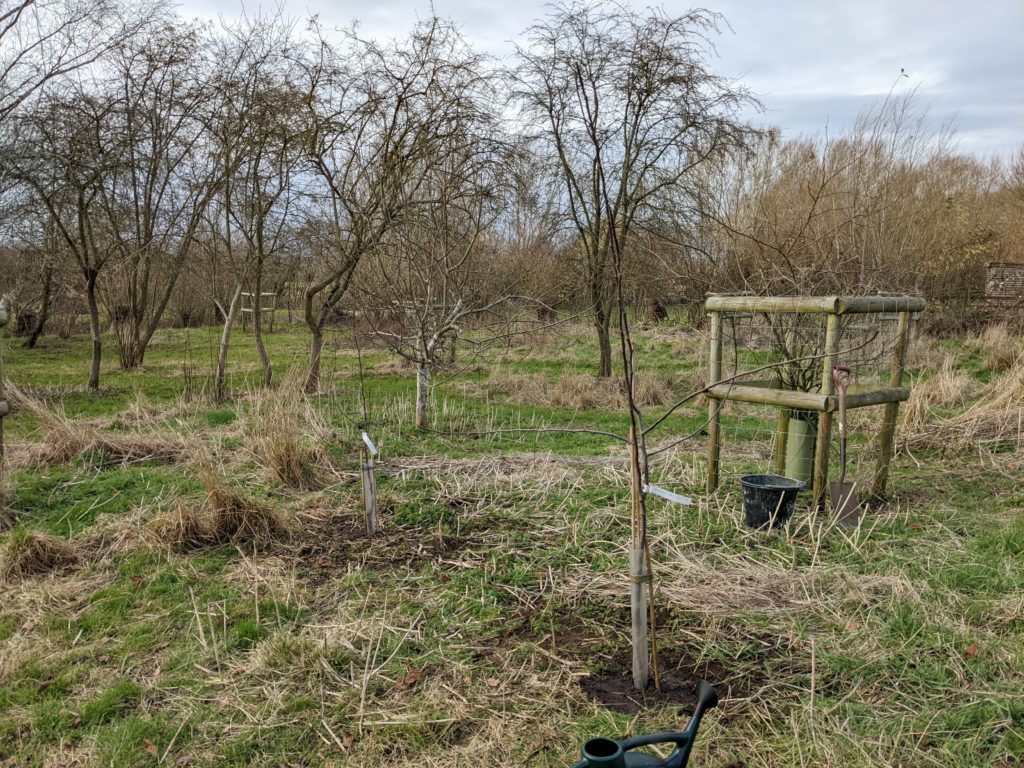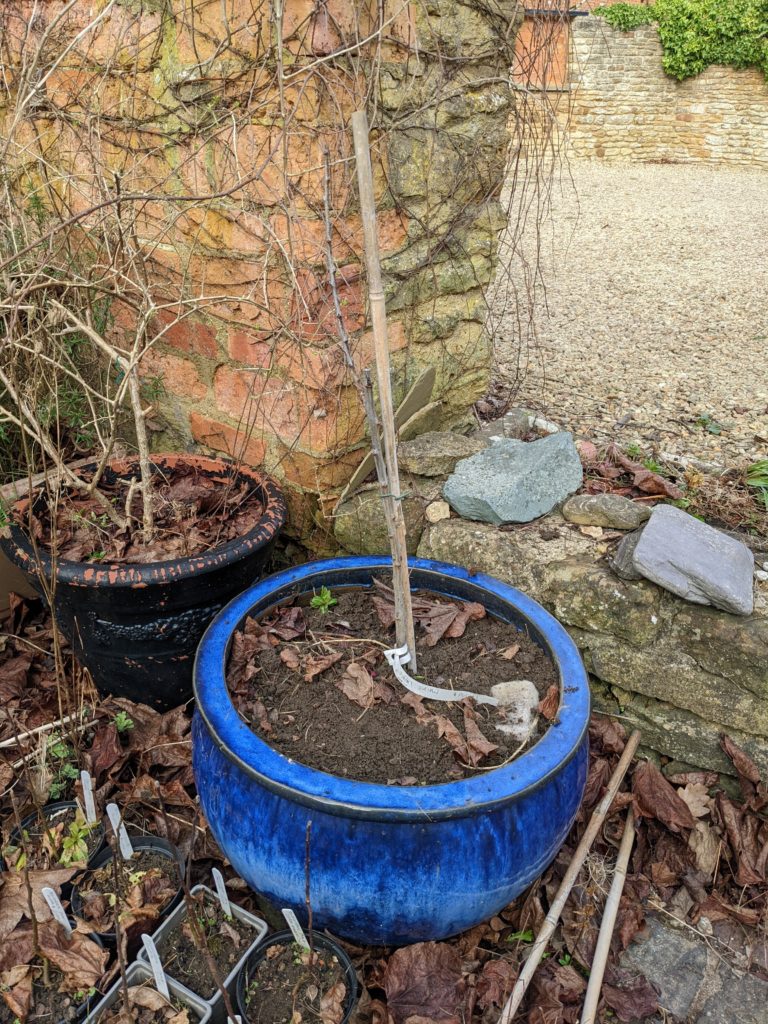My circular mantle is all sewn together, a complete circle with a round neckhole and an open front so you can easily put it on even when wearing a wimple. I described the garment’s cutting out stage here. And to close it, I’ve bought a lovely little ansate brooch based on a find from York, made by the skilled hands of Adam Parsons. These are now considered a common type of brooch for mid to late Anglo-Saxon clothing, and it works very well to pin my light, elegant cloak.
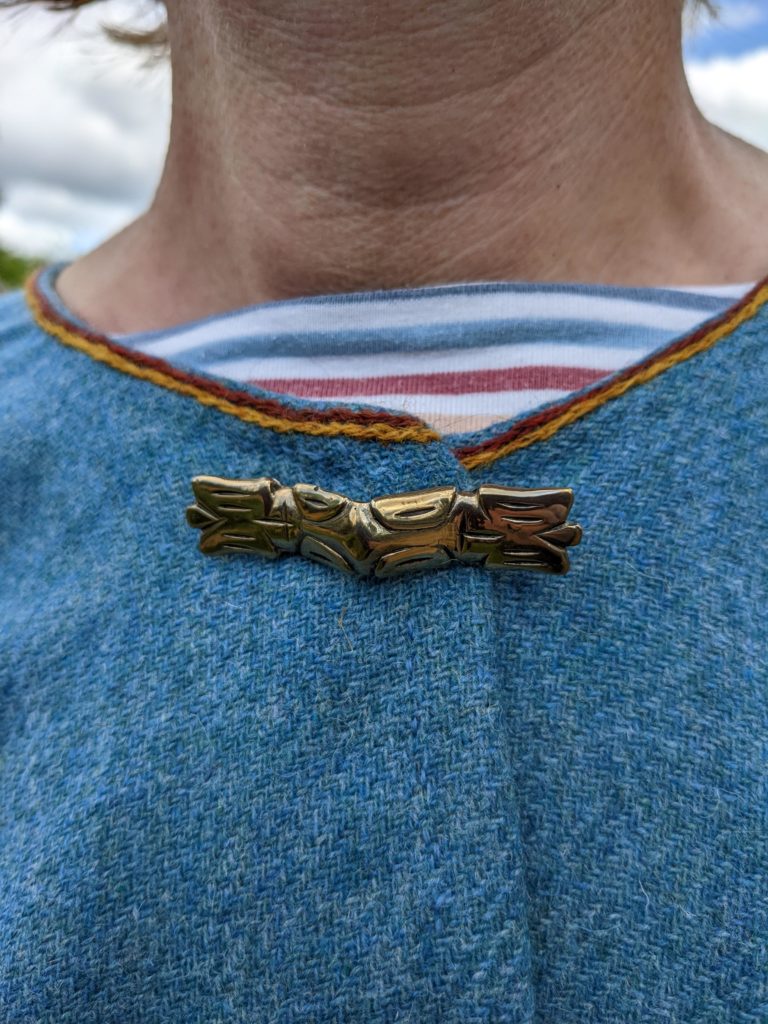
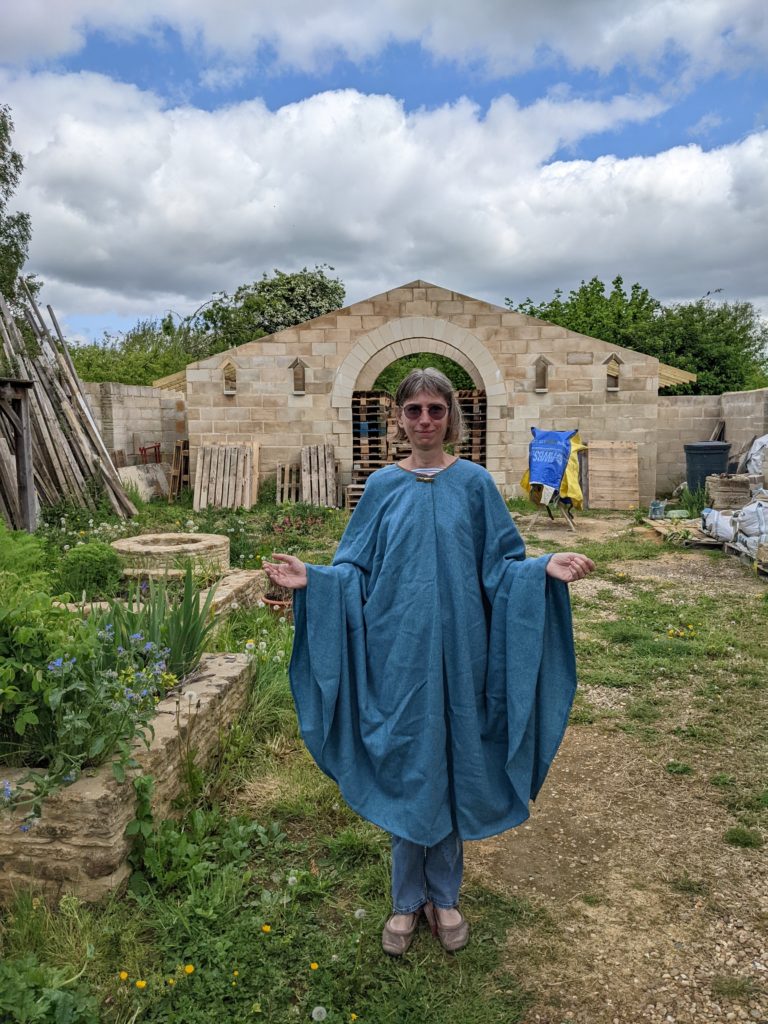
I am still unsure as to the accuracy of this reconstruction. In favour of the front opening is ease of putting on / taking off, and so far I’m finding that the front stays closed and by raising my hands at the sides, I keep my tummy warm! And a circular, or semi-circular, cloak seems somehow more of a European mediaeval garment than a poncho (but that is a really speculative argument).
On the other hand, maybe early mediaeval women just put the mantle on in the morning and wore it all day, living as they did in un-insulated houses in a chilly climate. And while I don’t think the opening shows much when worn, you could reasonably argue that at least some of the manuscript illuminations would show it, if it is a common part of garment construction.
Either way, I love it! It is lightweight, warm and comfortable, the fabric is super, and I have decided to tablet-weave a band instead of embroidery, because I’ve long wanted an excuse to design a high status band with crap lions on it. And this is a high status garment, using a vast amount of finely woven dyed cloth and wasting the cut-off corners (though I will likely use them for something). More on the lions in a future post!
